
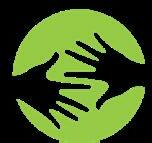
published by ZX Media Corporation Volume 5 Issue 2 • September 2022
Clean Resources
Agriculture, Forestry & Food
Emerging Technologies Health Innovation
GROWING OPPORTUNITY
Innovation is ensuring Alberta’s sustainable future.
Alberta Innovates brings people and resources together to help accelerate the adoption of new technologies that increase the sustainability and competitiveness of Alberta’s agriculture, forestry and food processing sectors.
Our two subsidiaries, InnoTech Alberta and C-FER Technologies, provide applied research services to government and industry clients to advance new technological solutions, from smart ag applications to bioindustrial products.
Learn how albertainnovates.ca

Subscribe for your free issue of Community Now! at
TABLE OF CONTENTS
VOLUME 5 ISSUE 2
Education: Today! P.5
Is Our Current Education System Preparing Our Children for The Future? Or are we just carrying on with what worked in the past? P.6
• Scott Pickard Education: Business P.9 Stepping Back to Leap Forward P.10
• Margo Purcell Bridging the Gap Between Education and Work P.14
• Al Del Degan
To Be a Better Leader: ‘Unlearning’ Is More Important Than ‘Learning’ P.18
• Steve Armstrong Telling It Like It Is P.22
• Jade Alberts w/ guests Matt Burgoyne Bitcoin is… P.24
• Adam O’Brien Is Your Company Protected? P.25
• Ammolite Analtyx: Cyber Security Education: Providing Space P.27 Community Feature; Education: Banbury Crossroads Private School P.28
• Diane Swiatek Providing Space P.37
• Marilyn Dyck We Need to Support Our Teachers P.39
• Christina Henderson Education: Learning From the Community P.40 Branch Out Innovation P.41
• Ty McKinney
The Superpower Project Navigating the Negotiation P.49
• Blaise Hunter - Superpower Project Hopes; Corner P.51
• Kimberly Dawn Motivation!! Who am I now?! P.52
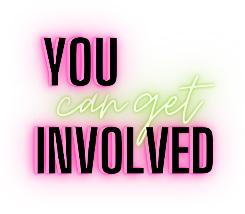
• Sharyl Madigan
This issue has been updated and a story was removed due to false content.
Volume 5 Issue 2 | September 2022
All rights reserved.
magazine
any
This grassroots magazine is a platform for, about and by the community.
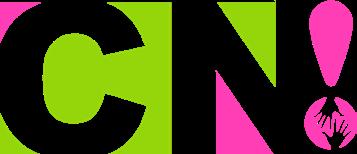
STORY TELLER & COMMUNITY CONNECTOR: Krista Malden
CREATIVE DIRECTOR: Kenzie Webber
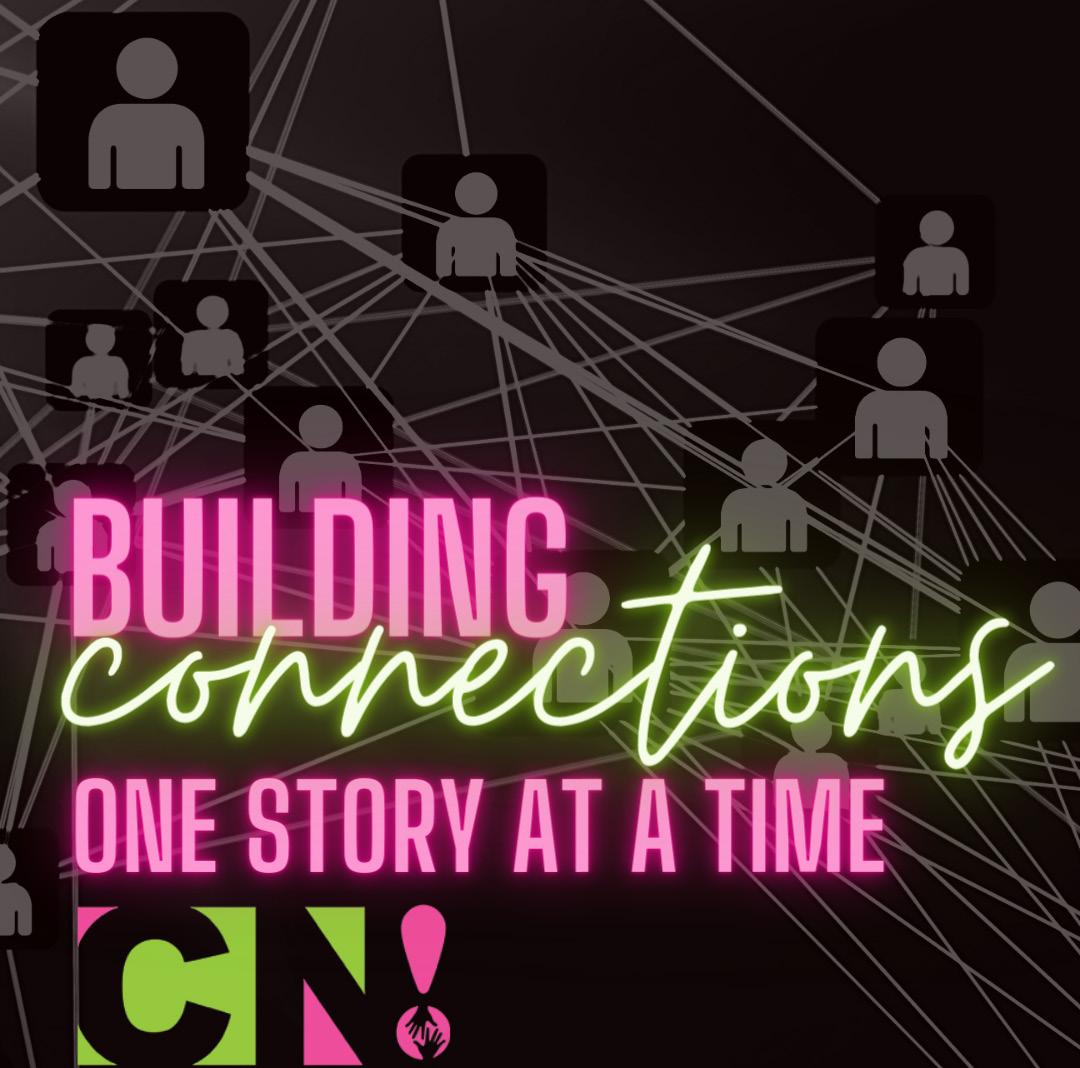
Copyright 2019 ZX Media Corporation, Calgary Alberta Canada Community Now! Magazine Copyright 2018, published by ZX Media Corporation.
This
or
portion thereof may not be reproduced or used in any manner whatsoever without the express written permission of the publisher and writer.
www.communitynowmagazine.com
Rest in Peace Queen Elizabeth II

Queen Elizabeth II you will forever be a legend. Someone we all believed would live forever. With beauty and grace, You stood in front of the world Empowering people to be better.
Rest in Peace Queen Elizabeth II, And thank you for all you have done. And all you will continue to inspire. Your story will be told around the world.
Rest in Peace
April 1926 – September 2022 4 // Community Now!

Education: Today! Education: Today! “Learning is Never Ending” “Learning is Never Ending” Community \\ 5
Is Our Current Education System Preparing Our Children for The Future?
Is Our Current Education System Preparing Our Children for The Future?
Or are we just carrying on with what worked in the past?
Or are we just carrying on with what worked in the past?
The key take away is to find a problem to solve, engage with people that have done it before, and succeed, or fail, fast.
One action can create a tidal wave.
Scott Pickard
Traditional learning models are DYING!

“I can study for a test in half the time other people can. I can crank out an assign ment the night before and get an A. I can show up at the SAT after one hour of studying and score in the 98% percentile. I’m an amazing student. But guess what. I don’t know any thing”.
This comes from a 20 something year old student that is realizing how much more there is to learn than what comes from behind a school desk. Traditional learning and engagement have changed with recent events. Of course, we need schools, post secondary and vocational institutions BUT the opportunities to learn far surpass the confines of a classroom and challenge the need for traditional
brick-and-mortar locations. Connectivity through the internet has fundamentally changed learning opportunities forever and eliminated geographic borders. With the right amount of time and focused effort, there are no limits for anyone as to what they can learn, in or out of school. Traditional learning models are dying but exciting new modalities are being created that expand reach and accessibility for everyone in nontraditional ways.
My work is in the tech space and I am writing this article through the lens of the ‘build to scale’ education model.
Using the general model of tech, one of the key drivers of the exponential growth in not only some companies but in overall sector growth is mentorship and accelerated pro gramming. The key take away is to find a problem to solve, engage with people that have done it before, and succeed, or fail, fast.
6 // Community Now!
There are thousands of programs available to people that are interested in learning this phi losophy and as many modes of delivery. The model is not perfect but has a proven track record as a model for future learning and growth, personal or business. Short, iterative, outcome-based learning/growth models are proving very successful.
When we step away from the tech sector and take lessons learned to our personal journeys, education can take on many definitions. There are countless ways to learn outside traditional education offerings or to augment traditional methodologies with online resources, for ev eryone. For those who may experience learn ing difficulties, come from under resourced home situations, have ethnicity and language barriers, or experience gender bias, of face dis crimination of any kind there are many other ways to educate yourself other than through traditional means, if the desire is there.
Education is no longer about school-based learning. Education is about enlightening yourself with ideas and new-to-you knowl edge about any subject, anywhere. This can happen within the community, amongst peers, in extra curricular activities, from elders and from nomad working – a new trend in the remote worker sphere. No one can use the excuse that they cannot become educated any longer. One of the fastest trending online growth areas is e-learning largely due to its ac cessibility and ease of delivery. Short, concise and module-based courses cover practically any topic of interest. A few clicks and the journey begins. Outside of the online world, people-based learning continues to grow through community organizations, niche pro gramming offerings and generally passionate people using crowd sourcing, social media and other creative ways to engage and inter act. Even in the most obscure or specific areas
of interest, there are others just like you who are gathering, talking, and sharing.
The question looms: are we preparing our children for the future, or just carrying on with what worked in the past? Like every one, you will have your opinion, and it is just that. You will go about your life and either settle with the status quo, or change, or ag gressively redefine yourself and maybe have some influence with your kids, peer group, colleagues or friends. Either way, the world will continue to progress. Even if you think it is too late for yourself (and you’d be wrong in that thinking) to make any significant change, imagine what impact you could have on someone else who is looking for change or does not even know that there are other op portunities available to them? One action can create a tidal wave. This is a non-traditional ripple that learning, being more educated, en ables. Imagine if you inspired one younger person to do something they never thought possible. And they did the same, and they did the same. One action creates a sustainable wave.
For the older generation, are you done ex panding your education? Old dogs can learn new tricks and the opportunity is right before you to take up that hobby, engage with your passion, add a side hustle. The limitations are only ones you have put on yourself. Just because you don’t have the knowledge today does not mean you can’t start the journey to get educated tomorrow.
Education should be never ending; however you define it. Embrace the endless opportu nities that exist to enhance yourself and those around you and challenge our children and younger generation to experience the world as it was meant to be, not behind a desk but through experiences and engagement.
Community \\ 7
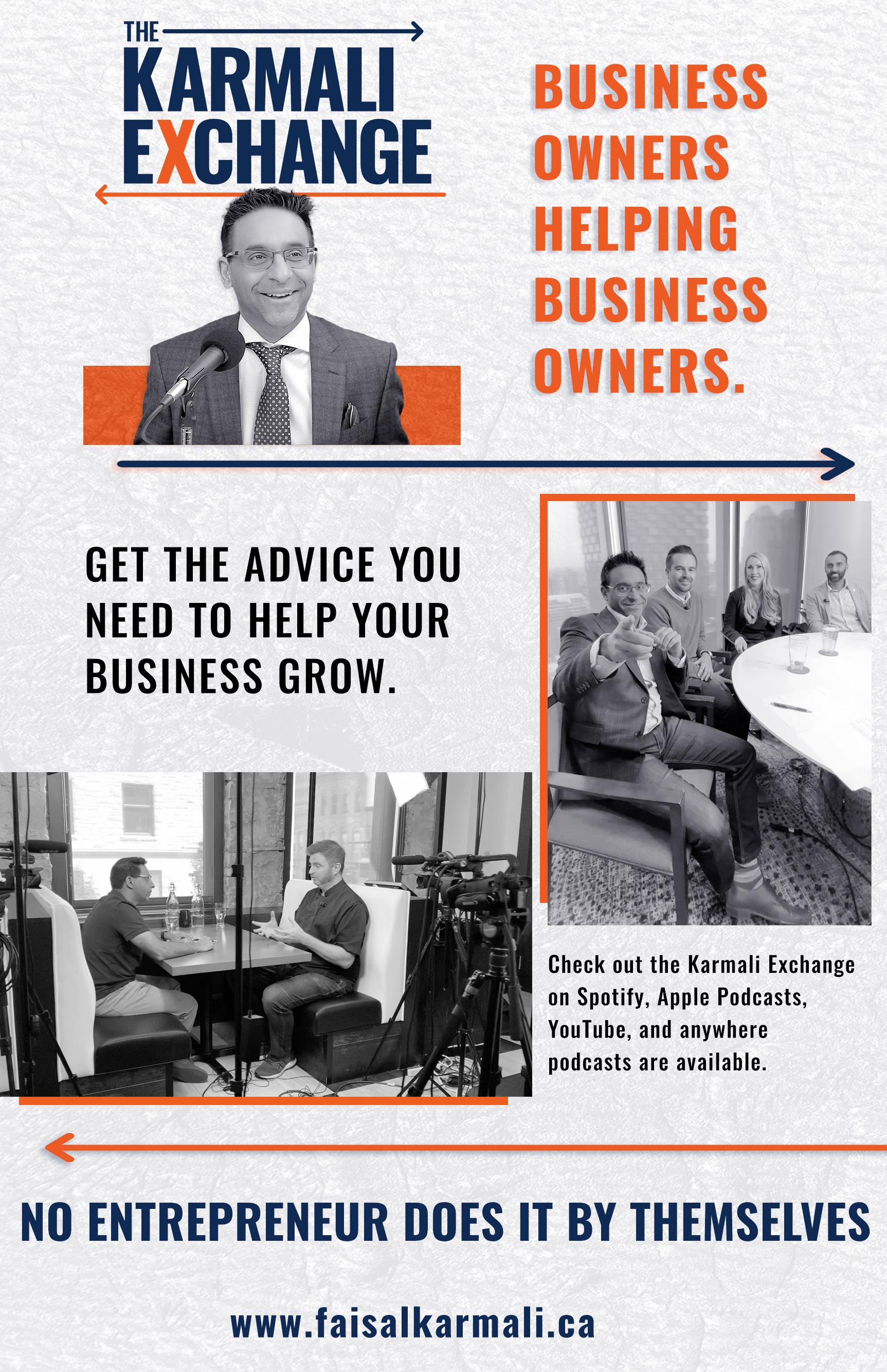
Education: Business

Community \\ 9
Stepping Back to Leap Forward
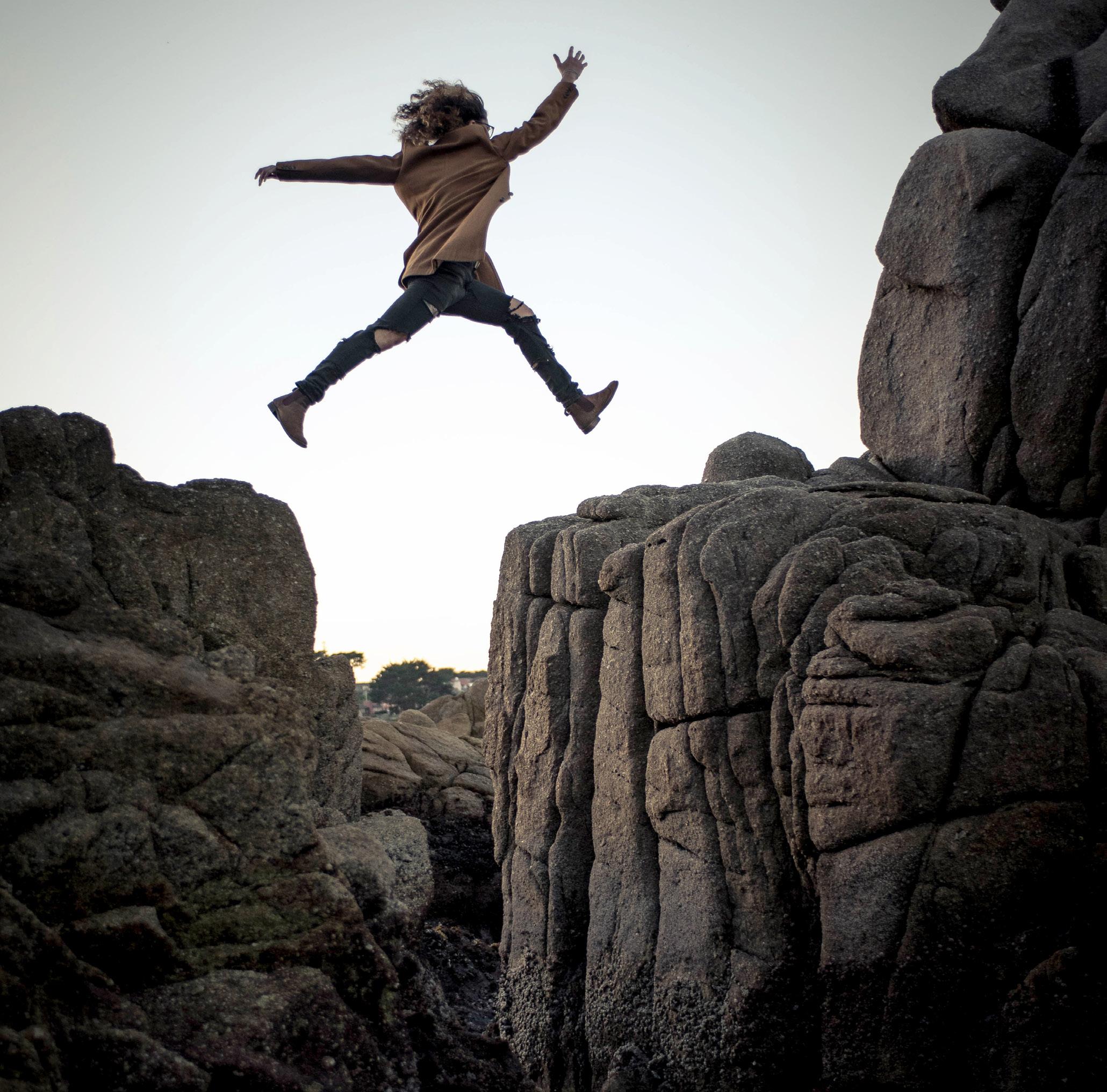 Margo Purcell
Margo Purcell
It’s
an age-old question and one that we continue to ask young people at earlier and earlier ages. We see a push for special ization when it comes to selecting education streams in high schools. We see pressure to pick a sport and stick with it (and only it) at younger and younger ages coupled with a fear that if they haven’t chosen and commit ted early enough, they have “no chance” at sporting success. Heck, we see Coding for Babies.
I’ve worked with adults at the other end of this early specialization push. These are people who feel stuck in unfulfilling careers and ask themselves, “But what else can I do?” They are afraid to change jobs, companies or indus tries because they tell me, “It’s too late” or “I don’t have what I need and can’t go back to school.” People forced to change jobs/careers due to shifts in the industry or economy who are terrified of “starting over” and are anxious as they see diminishing years to achieve the career gains they want/need.
“What do you want to be when you grow up?”
10 // Community Now!
Let’s step back.
In his book “Range: Why Generalists Triumph in a Specialized World”, David Epstein showcases career suc cess in many fields from people who explored a wide range of areas and only specialized later (in their educa tion and in their life).
But what about “Jack of all trades and master of none?”
Research doesn’t back that up.
Epstein studied the world’s most suc cessful athletes, musicians, scientists, inventors and artists. He found that outside of fields of endeavour where the activities remain similar (even if the conditions change) - more hours of practice (specialization) early in life, did not result in greater performance. In fact, the exact opposite was true. The greater the diversity of activities and endeavours, the greater the amount of exploration and experimentations across fields, the greater the perfor mance once they picked a specializa tion.
He also found that there tended to be greater satisfaction and career longev ity since the specialization often came from discoveries through the years of generalization and was often informed by the cross-pollination effect of having had a wide variety of experiences and learning to draw from.
What does this mean for education?
We need to provide as many oppor tunities as possible to explore a wide
As an educator, you carr Not only are you expected to teach today’ also have a huge impact on their future ch they will become. CAREERS: The Next Generation of

WITH CAREERS , EVE RYONE WINS
, carry a lot of responsibility. ’s youth, you y. o they will become. CAREERS: Th fers



y eir future



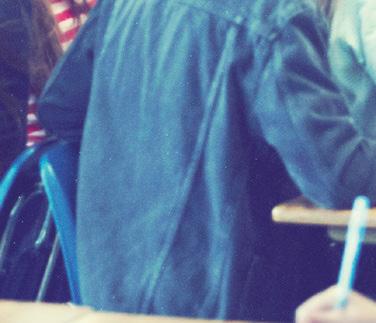
ar s th ation offers
y e choices and who th






We challenge employers to take on the future with our emerging talented students.
between Industry Education
the Community is essential to create
safe rewarding environment where youth can explore their career path and together we can
Collaboration
and
a
#takeonthefuture. #TakeOnTheFuture #Collaboratio n #Careers L ear n m ore! careersnextgen.ca (continued on next page)
range of fields of study and an even wider range of learning experiences. By experiences, we mean hands-on, learn-by-doing.
Test, Iterate, Integrate.
It means providing the environment for people to try new things, see how they work (or don’t) and support the learners in the discovery process which includes what they discover about themselves in the process. It means having educators be facilitators of the learning process - putting the ingredients for learning out without a preset recipe card of the “one way” to put the ingredients togeth er. It means having everyone involved in the learning let go of pre-determined outcomes and instead be open to what emerges and the learning that comes as a result.
Designer Mindset
For us to do this on a large scale, we need anyone and everyone involved in learning (learners, educators, family, friends) to adopt a Designer Mindset. A designer mindset begins with determining what success looks like and being open to multiple views of suc cess. From there, we define design as creating the conditions for success.
Sounds simple AND this too requires a range of curiosity and competence across multiple fields of endeavour. We need to dig deeply into human nature and the understanding of how humans behave and think. Without that, we are likely to build learning environments that fall short of the supports people need when they need them (maybe even failing to recognize that they need support at all).
We’ve been applying these principles and concepts at InceptionU over the last four years through our Evolve programs. We’ve also been applying them to ourselves and our organization.
We are excited that we still have lots to learn. And we foster our own curiosity to continue to do exactly that.
As you look to design and lead your own education and career pathways, first and fore most, be curious about yourself. Pay atten tion to the signals you get (physical, mental, emotional, spiritual) that help you recognize which is the next best step on your path. You may notice things like:
• your energy goes up
• you become so immersed as to lose track of time
• you experience ease even when stepping into something new or unknown
• you experience great satisfaction after learning even when it was challenging/ frustrating
• you repeatedly hear from others that they observe a positive shift in you when talking about or engaged in the topic/ac tivity/subject
My co-founder Greg Hart often says “That attention is a scarce resource for humans. Paying attention to the signals that come from within is a very worthy use of that scarce resource. It is through this that you can look at the ingredients before you and create your own recipe for education and career success.”
(continued from page 11...) 12 // Community Now!

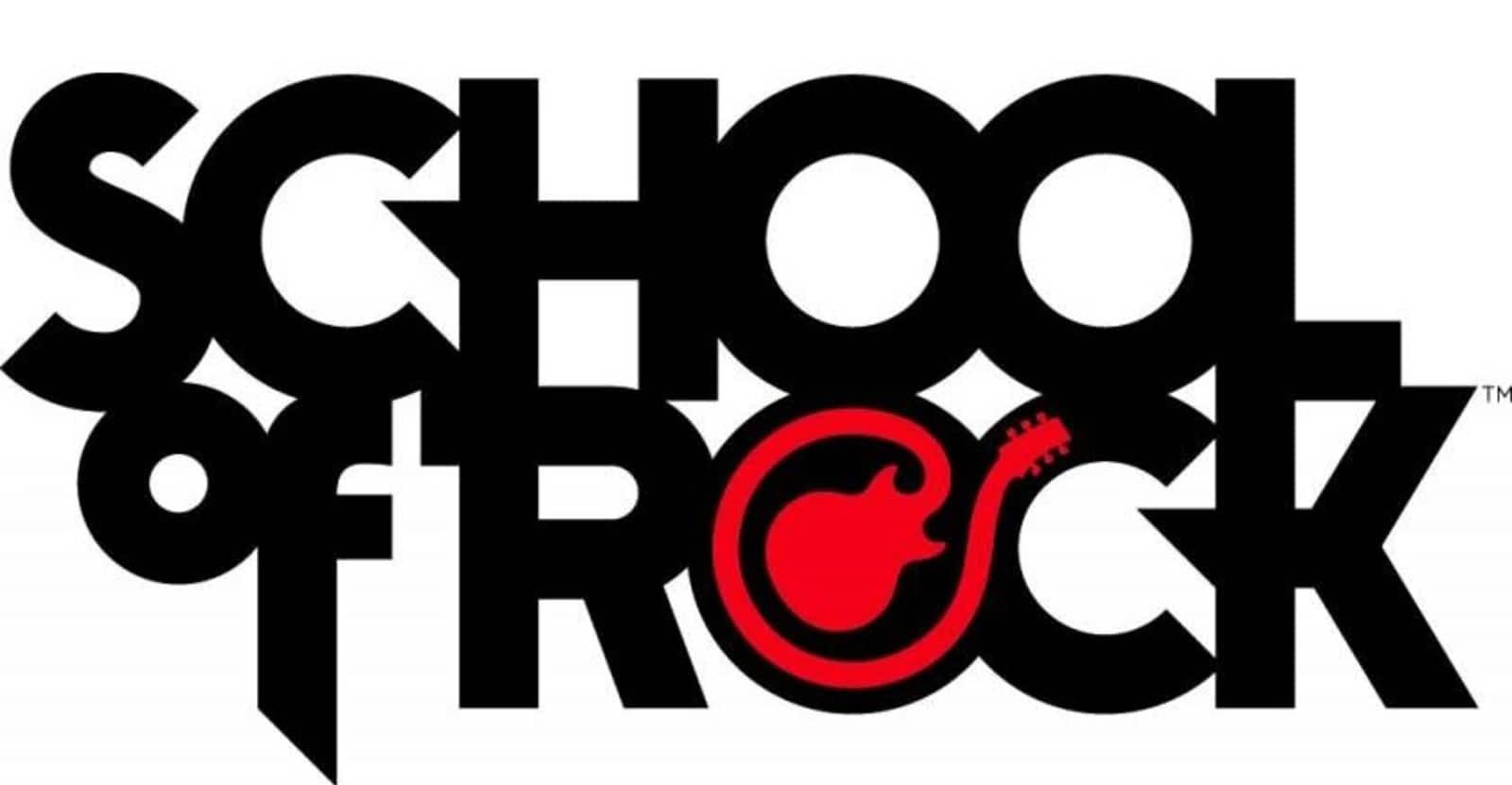
GETS STUDENTS PERFORMING LIVE MAKES PRACTICING FUN TEACHES STUDENTS SONGS THEY LOVE MAKES TECHNIQUE ACCESSIBLE SCHOOL OF ROCK | Calgary 2707-17th AVE SW, Calgary, AB (587) 353-7625 calgary.schoolofrock.com OUR PATENTED RESULTS-DRIVEN PROGRAMS COMBINE ONE-ON-ONE LESSONS WITH GROUP BAND PRACTICES, MAKING SCHOOL OF ROCK THE ULTIMATE MUSIC SCHOOL FOR KIDS AND ADULTS
Bridging the Gap Between Education and Work
Al Del Degan
It’s
no secret that there is a shortage of tech talent in Calgary. In fact, the prob lem is much larger than that. Companies across North America, and even in Europe are having trouble finding qualified and experi enced people.
In Alberta, the government acted relatively quickly to provide funding for various tech training programs over the past few years. The plan was to help the unemployed and underemployed pivot their careers into tech. Unfortunately, once people complete these re skilling programs, they have difficulty finding jobs in their new field because they lack prac tical experience. To be clear, it isn’t that they are not capable. In fact they are very capable, but companies have a misconception that

without extensive experience, these people are not able to be productive, and require hand-holding.
What adds to the issue is that the government itself, doesn’t even hire any of the people they have funded to take the training programs.
How can the innovation ecosystem solve this chicken and egg problem where you can’t get a job without experience, but you can’t get experience without a job?
What if there was a program in the middle that could take in career pivoters and provide mentorship and hands-on experience while these people are job hunting?
It’s time for a new idea. Actually, a New Idea Machine! We fill the gap between education and experience by gathering new grads from
14 // Community Now!
bootcamp and short-form educational programs that teach tech to people who are pivoting their careers. These people are put into teams with a product manager, a UI/UX designer, multiple full-stack software developers, and when applicable, data scientists and AI/ML specialists. Together, these teams explore and grow their experience working on real industry projects, mentored by senior industry professionals.
As they work on their agile projects, they gain valuable experience working in cohe sive teams, often learning new technologies and techniques that make them better at their craft.
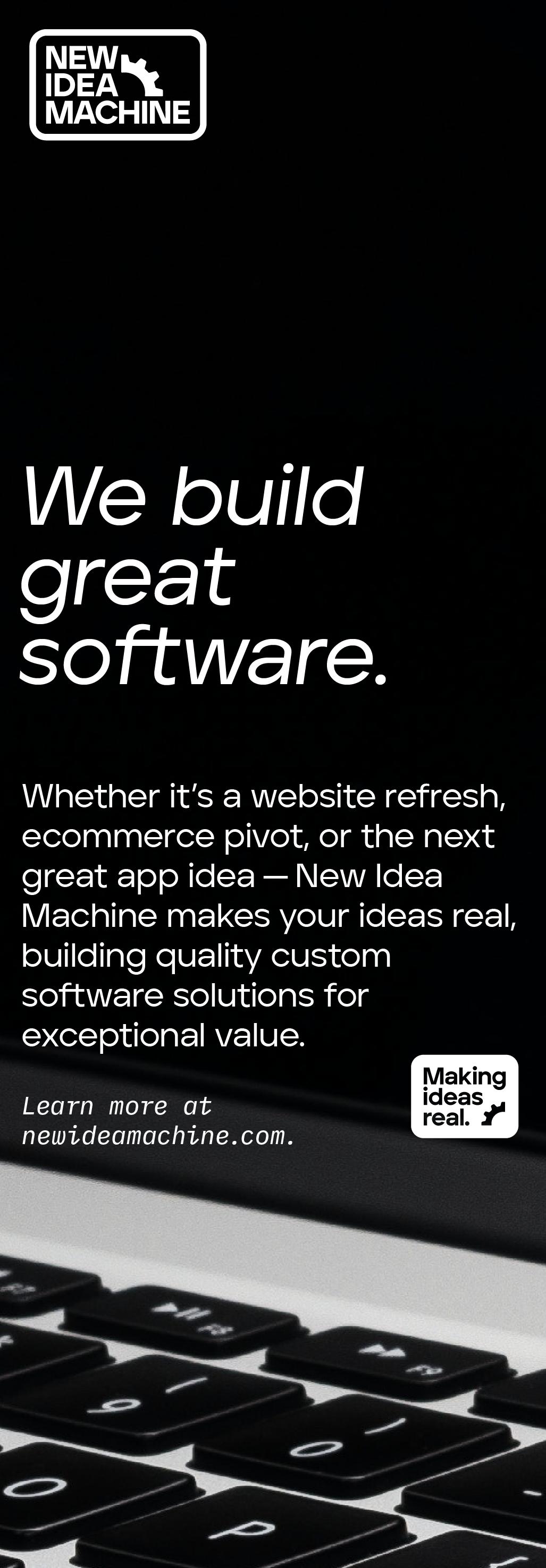
(continued on next page)

Community \\ 15
These people are incredibly passionate and excited to explore new ideas. Contrary to what some might expect, they don’t need hand-holding and work together to help each other grow their knowledge.
The best part is that any company can come and hire directly from our pool of talent. It doesn’t matter if you are looking for an entire development team, or a very specific individual, we can help reduce the risk, and time it would normally take to find those new hires.
New Idea Machine, at its core, is a custom software development company that can build your software for you. We support the future of our innovation ecosystem in Alberta by hiring and mentoring new career pivoters so that soon there will be ample tech talent available.
Our services include: Rent-a-coder - expand your team temporarily by one or ten, for three, six, or twelve months. Feel free to send them back to us when you
are done, or hire them onto your team perma nently.
Custom Software Development - we can take on any size project and we are not afraid to learn new technologies. We can expand or shrink your team size as needed to meet your milestones, or respect your monthly budget.
Talent Funnel - Why waste time and money putting up job ads and sifting through re sumes hoping to hit the jackpot on your own?
Especially when we already have proven talent that can match your requirements. We have people from all of the various training programs in Calgary and even from across Canada.
We are doing something very different, and our model is proven. Each week, more talent joins us, and more companies are coming to us for both development projects, and new talent for them to hire.
For more information, or to get in touch, please visit our website at https://NewIdeaMachine.com
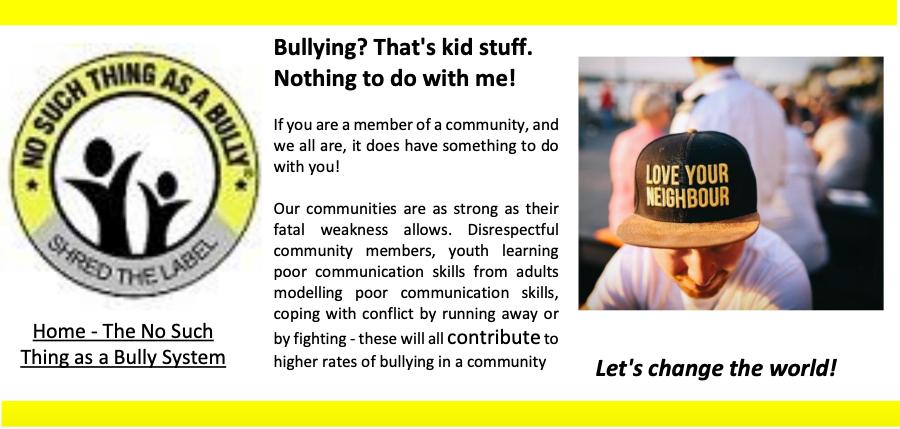
(continued from page 15...) 16 // Community Now!
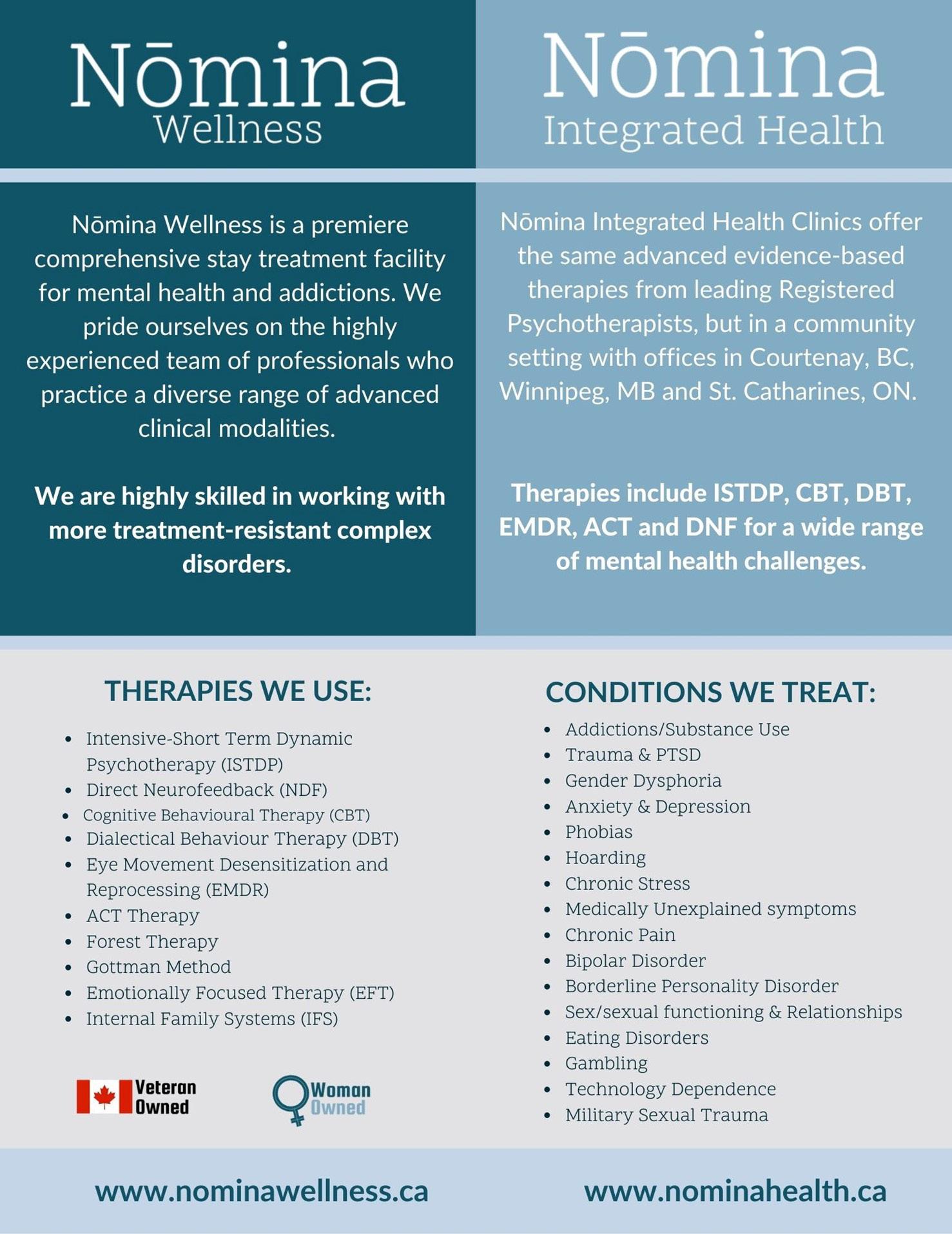
Community \\ 17
To Be a Better Leader: ‘Unlearning’ Is More Important Than ‘Learning’
 Steve Armstrong
Steve Armstrong
Fordecades the leadership ‘TalkingHeads’ emphasized that good leaders were learning leaders.
I, like you, fell for that platitude. But quite frankly, I think unlearning may be more critical.
I recently had a conversation about the chang es we have seen since we grew up in the 60s.
Such as; A family friend’s son publicly transi tioned from his birth gender of female.
In the 60’s, there were jobs that women were not allowed to do. Pot led to debauchery. LGBQ
people were harassed, jailed, and ejected from institutions like the military. People of colour were routinely openly and legally the victims of racist policies. First Nations people were kept behind locked gates.
Today, is where unlearning becomes essential.
Can you unlearn things you would have bet the ranch on?
Since the discovery of 1000’s, of Residential Schools unmarked graves where babies & children were unceremoniously disposed of, we have been steadily unlearning the history that was taught us. There is a whole other
18 // Community Now!
version of history that includes people of colour and events so brutal it is heartbreaking.
I have spent the past few decades unlearning and expanding my view of how the world was made. And how we got here.
And celebrating the changes: women are serving in the military as combat soldiers. LGBQ people are proudly out in the open. ‘Off-Colour’ humour that was once perfectly acceptable is now recognized as horrifying.
These changes are 100% needed. We need to recognize the different versions of history and acknowledge that other people have perspec tives that are as valid as our own.
The Post-Pandemic Workplace
Return-to-office planning is ramping up, and as many companies have experienced tremen dous change in headcount over the past two years, the transition back to the office intro duces the challenge of welcoming new team members and reorienting existing employees.
We know that many of us need to unlearn what the traditional workplace looks like. From space to desks to resources, for new to returning workers to what our leadership team looks like and does.
Since there is no one-size-fits-all approach, we need new methodologies to guide our or ganizations to face unprecedented challeng es — and opportunities — to create a better workplace experience in the post-pandemic era.
We need to unlearn that headcounts and floor space are signs of importance and value. As the economy reopens, competition will be intense. Everyone will return to a changed workplace. Expectations will differ from person to person and could create tensions across generations at work.
These new sensibilities will affect how leading companies attract, retain, and inspire talent for many years. Culture is rooted in commu nity and the “social infrastructure” that con nects people and shapes how we interact.
The modern workplace will need to foster in-person and virtual relationships, build communities at work, and allow people to achieve more.
It is super hard to unlearn
It is a truism that nothing is harder to do than to unlearn something you hold to be true.
For many of us, historical leadership models point to outmoded arrogance and assump tions that the leader has a hold on reality and truth.
When leaders are 100% sure about something, they convey inflexibility. In turn, their obstina cy discourages debate and dialogue. Whether they are aware of that fact or not, a leader who radiates a high level of self-assuredness com municates to those who follow that they must agree with their boss or remain silent.
This leads to compliance and complicity — even willful blindness, which can lead people not to bring up big problems when they see them.
In his article “The Simple Difficulty of Being a CEO,” leadership consultant Patrick Lencioni refers to this trait as “invulnerability” and says it’s one of the temptations of a CEO that can lead to failure.
“The adage ‘Don’t let them see you sweat may be appropriate for actors or salespeople, but for leaders, it’s a problem,” he writes.
(continued on next page) Community \\ 19
“Arrogance hampers your ability to build trust among your people.”
Lencioni says that when leaders do not admit to being wrong, employees mirror that be haviour, which becomes “a never-ending posturing exercise, where real dialogue dies.”
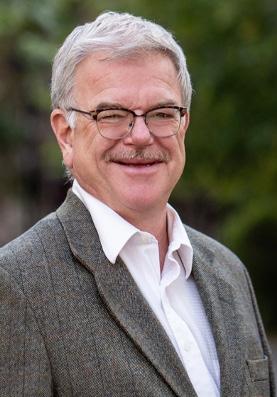
The longer a successful leader has been around, the more this assuredness can tune out different thinking, approaches, and ideas.
Don’t be that leader.
Here are three shifts you can make to contin ue learning and unlearning:
Shift #1: Engage in continual learning — and never assume you are done learning.
How? Ask open-ended questions that begin with “What” or “How might we?”
Shift #2: Be present and “quiet the chatter.”
How? Carefully analyze the critical events or communications that challenged your think ing and beliefs. Write them down, then reflect on which of these might be ones you need to unlearn.
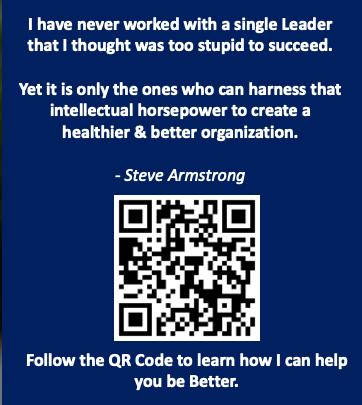
Shift #3: Welcome diversity in thinking and approach.
How? Immerse yourself in a divergent per spective to gain a deeper understanding of it. Follow new people on social media, watch different news channels, and keep your mind wide open.
Remember the phrase, “Minds, like para chutes, work best when open.”
You may have to unlearn what you once thought true and sure to get your mind opened.
(continued from page 19...) 20 // Community Now!
Gusto Law offers comprehensice, business-focused legal servies at competitive prices

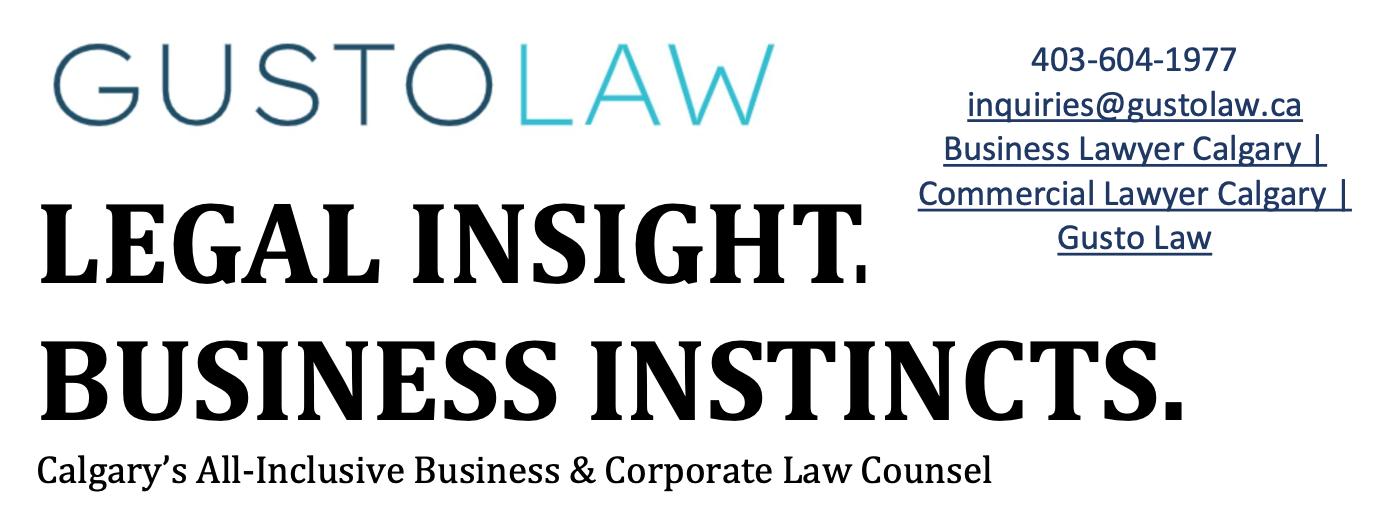



Telling
You are the leader of the Canadian Blockchain Consortium (CBC) Legal Committee, what is the purpose of the committee?

I am the chair of the Legal Committee of the CBC. The Legal Committee is made up of private practice lawyers from some of the leading law firms in Canada. We have sever al lawyers from Calgary and Toronto on the committee. The purpose of the committee is to education the public and Canadian Block chain Consortium members about Canadian law and how it gets applied to cryptocurren cy and blockchain. We have webinars where a panel of experts discuss a specific topic (where the public is invited to participate), we write articles regarding current legal trends affecting the industry and post them on the consortium’s website. We have bi-monthly meetings where we discuss pan-Canadian issues of interest and what individual lawyers are seeing in their everyday practices. It’s a great forum to share intel and ‘war stories’ and it’s a very collegial group of lawyers (all from competing law firms!).
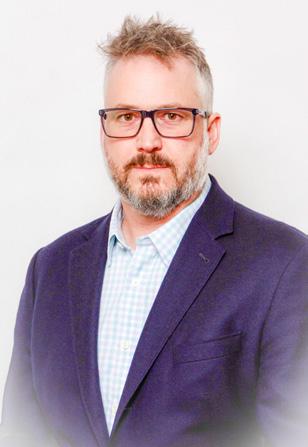
It is still the wild west in the crypto world. What is your biggest concern from a securi ties and legal point of view? One of the burning topics is how certain activ ities in cryptocurrency that are gaining popu larity are classified under Canadian law. For
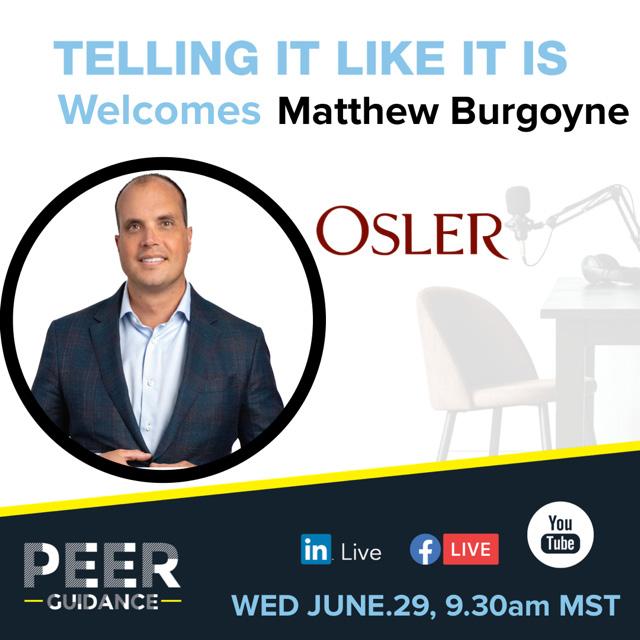
This issue of Telling It Like It Is Features Matt Burgoyne, Partner at Osler, Co-Chair, Digital Assets and Canadian Blockchain Consortium Legal committee.
It
Like It is
www.PeerGuidance.ca
YouTube https://www.youtube.com/channel/ UCbKhV5FWGIPrHKrqOpIwRTA 22 // Community Now!
example, certain staking activities are popular but it is not 100% clear how the provincial securities commis sions view the activity and whether it can be conducted in compliance with Canadian securities laws. Same goes for crypto lending. It is up to industry leaders to educate the regulators and bring issues to them and present ideas on how certain activities can be regulat ed. Without our feedback and guidance, I am concerned the regulators may ‘get it wrong’ and impose overly burden some regulations which don’t actually achieve their intended purpose. Lawyers who act for clients in the space in Canada need to get more involved on se curities regulatory committees and meet with regulators on a steady basis in order to bring certain issues to their attention.
There are a lot of buzz words like NFT, Metaverse, and it is still the wild wild west out there. What kind of legal advice do you have for this?
Please get proper legal advice before starting a project (not after), ideally from a practi tioner who understands cryptocurrency and is active in the community.
What is next for you and the CBC Legal committee?
We intend to grow our committee by bringing on lawyers from other parts of the country, including Montreal and Vancouver. On a per sonal basis, I have just joined the international law firm of Osler, Hoskin & Harcourt, sitting in its Calgary office. I intend to grow my
client base and continue to service both entre preneurs and start-ups to some of the largest cryptocurrency companies in the world.
Canada Blockchain Summit on Oct.19th & 20th is an exciting multi-day event that brings together leading organizations, companies, and thought leaders to showcase how this emerging technology is transforming the future. For more information, visit our web site - https://www.canadablockchain.ca/ canadian-blockchain-summit/
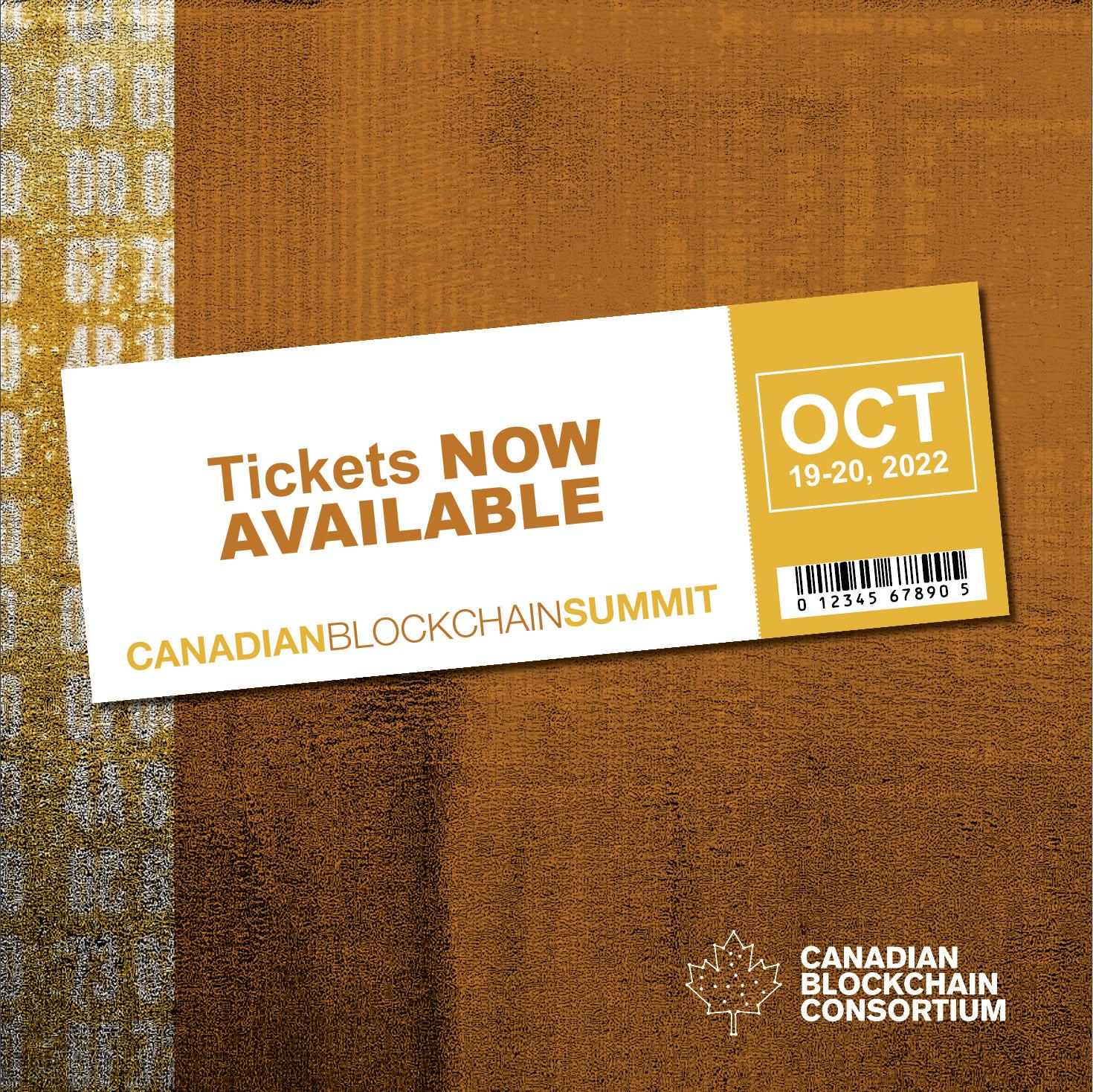
Community \\ 23
Bitcoin is…

Key-Angels
Key-Angels.com is a unique financing platform that connects single parent and zero parent families access to buying their first home.

By connecting them to people who have Qualifying room, so they can buy their first Home while renting the other units. #ittakesavillage.

Why we wanted to do this is we want to bring families together and reduce anxiety\stress and improve mental wellness
Our mission is to provide investment with a purpose. Which also helps single parent and zero
parent families buy their first home, which would be an income home as they live in one unit and gain stability.
Purpose: To provide access, and solve the housing crisis
Our Value is providing single parent and zero parent families the ability to grow and succeed in their lives. They will have a roof over their head, stability, and the opportunity to access their first home!! Which is great for YOU the investor, great for them, and great for the Community.
“Bitcoin
is money that puts its owner in complete control. It is permissionless and censorship resistant meaning that no single entity or authoritarian can control it or prevent anyone from using the technology. Owning and controlling bitcoin is an excellent way to be financially sovereign.” - Adam O’Brien, Founder of Bitcoin Well It’s important to do research, be informed and to understand crypto currency. Stay informed here: bitcoinwell.com/learn bitcoinwell.com/learn
Key-Angels.com
“Will the next generation be able to buy a house?” Let’s talk about providing stability for the next generation. Anything Is possible!
Is Your Company Protected?
Every 39 seconds a cyberattack is launched.
Let’s repeat that: Every 39 seconds a cyberattack is launched. Is your company protected?
Two thirds of all SME’s go bankrupt following a cyberattack. Over 80% get hacked again.
Why is cyber security important?
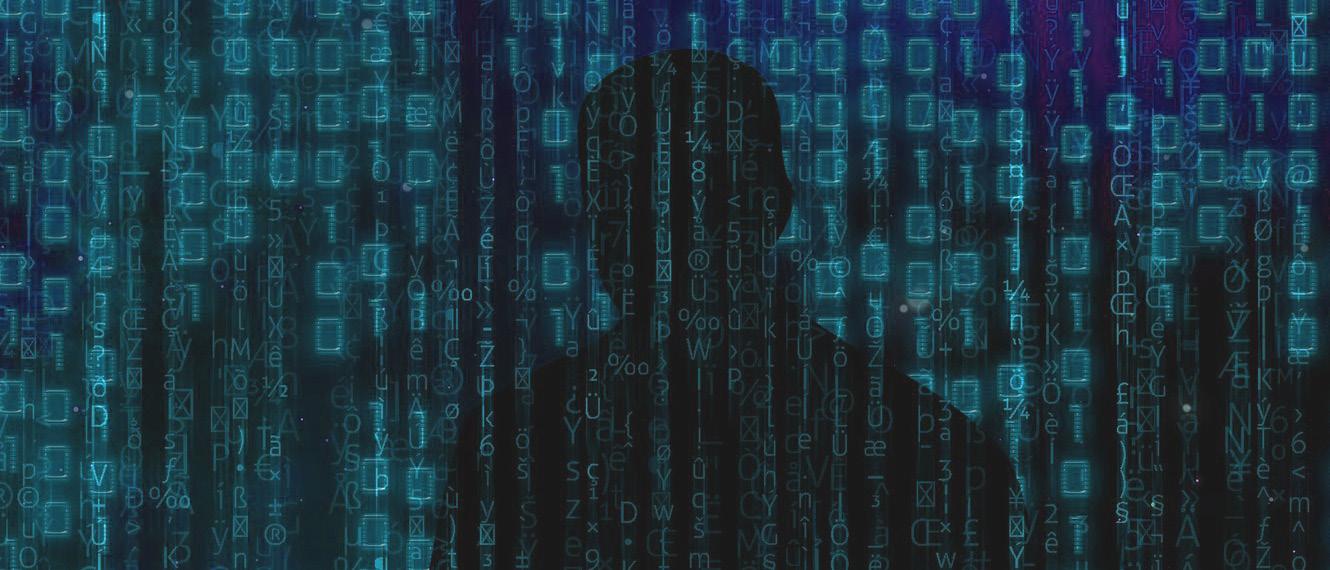
• Canadian businesses are noticing an increase in cyber attacks year after year
• The financial and reputational costs of a securi ty breach are enormous and can put a business at risk
• Cyber security measures put in place provide a competitive advantage to organizations
• Adopting sound cyber security practices reduce the risk of successful cyber attacks and ensures compliance with regulations and stan dards
Working jointly with the National Research Council and In-Sec-M, Ammolite Analytx supports SME’s to adopt better cybersecurity practices and reduce the impact of cy berattacks.
ENHANCING YOUR CYBER SECURITY
1. Protecting your business from cyber attacks
• Identification of vulnerabilities in operational systems through Pen testing and reviews
• Recommendations to protect your operations to reduce risk
• Best practice advisory for remote work
• Guidance on setting up a cybersecurity aware ness program
2. Comply with legislation, regulations, or standards
• Coaching on the certification requirements for standards such as HIPPA, ISO/IEC 27007:2011, ISO/IEC 27002:2013
• Coaching on complying with local and inter national laws, regulations, and standards such as the Canada’s Privacy Act or the European Union’s General Data Protection Regulations (GDPR)
• Coaching on complying with digital identity standards
• Developing a Privacy Impact Assessment (PIA) for a service
3. Identifying and developing innovative cybersecu rity solutions
• Coaching for the development of innovative cybersecurity solutions
• Coaching for the integration of privacy by design and security by design in new system architecture
Ammolite Analytx accelerates threat intelligence by solving complex technical security challenges. Ammolite Analytx, with its extensive network of cybersecurity experts across Canada, provides orga nizations with access to expertise and state-of-the-art technologies to protect against malicious and costly cyberattacks.
AMMOLITE ANALYTX AMMOLITE ANALYTX ARE you protected? Let us do what we do best and protect your SME, before its to late. (403) 616-0994 • info@ammoliteanalytx.com ammoliteanalytx.com Community \\ 25
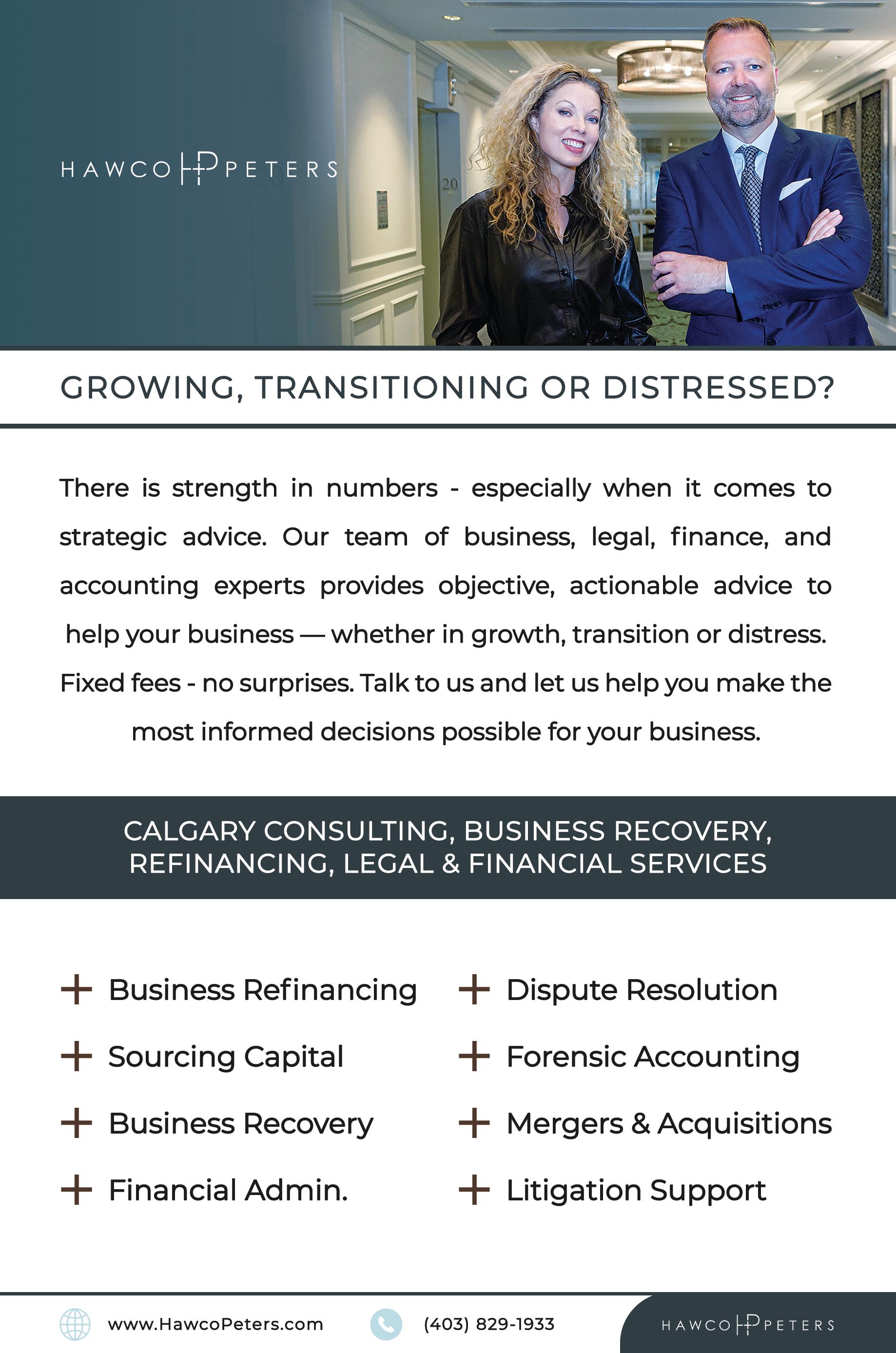
Education: Providing Space

Community Feature; Education: Banbury Crossroads Private School
Banbury Crossroads private school is a community that feels like a family. It’s a fact: this is a school where you love to be every day and where you have the freedom to be yourself. At Ban bury you are seen, heard, and understood. Self-Directed Learning stimulates engagement and happiness.
Diane Swiatek is the Founder & Director of Banbury Crossroads school. She has a passion for learning, teaching and helping young people become the best versions of themselves!
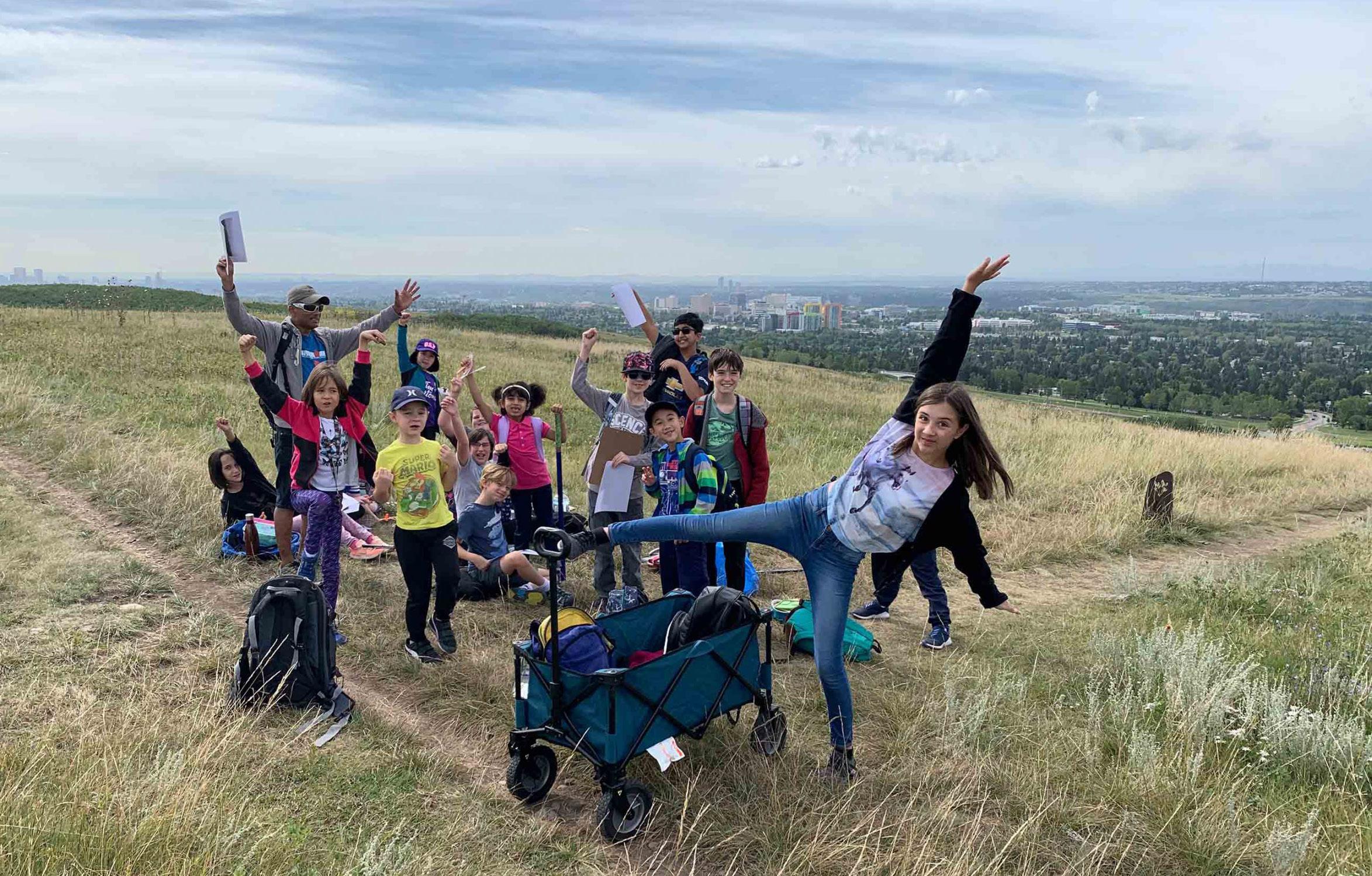
Q & A with: Diane Swiatek; Founder of Banbury Crossroads Private School
Q: Why did you start a private school?
A: Fundamentally, I did not want to teach in a conventional school. From my own ex perience, I knew, through attending typical schools, that I could satisfy my curiosity to learn, in some basic ways. However, as a child, I had wanted much more contact with the real, outside world, more hands-on and experiential learning, and more meaningful,
mutually caring relationships with my teach ers and peers. Although I went through my own schooling years being extremely busy with managing assignments and activities, and memorizing information, the spark of ini tiative and inspiration within me was muted. I could satisfy the expectations of the adults in my life, but I was not free to invent or imple ment my own dreams.
As an adult, I came to dislike and disbelieve in the power differential between students and their adult teachers and administrators, whereby students had very little power to
“Children have the right to determine the course of their own lives.” Diane Swiatek
28 // Community Now!
make consequential decisions. I did not like the formal, institutional atmosphere in most schools. Indeed, I probably would have never chosen teaching as a career; I would have done anything other than become a teacher. Life happened, though. I read a book, and I changed my life in response. It was called, Summerhill, by A. S. Neill. He ran a boarding school of about 60 students in England. Neill believed that children have a right to be happy, as a basic human right. He also believed that children should have the right to determine the course of their own lives, as long as they don’t interfere with the rights of others. These two main ideas were startling to me, in their positivity and their practical expression of liberty. I was inspired as a young adult when encountering the idea that, although many schools are built of stone, the ideas behind them are not actually written in stone. This realization opened up a vista of change for me through the possibility of designing a different vision of schooling. I came to understand that schools are merely human philosophical con structs regarding child rearing and education that are manifest in the operations of schools. I also discovered the Open Classroom model in the modern British infant system, where the practical organization was based on a stu dent-directed, tutorial model of instruction, rather than a teacher-paced, lecture-based method. I loved the thought of young people being able to move, make decisions, collabo rate and experience the real world directly, all within the expectation of mutual respect. In other words, I discovered that school did not have to be the way I had experienced it. It could be otherwise. Children could be happy in school. Banbury Crossroads School has become that otherwise school to me.
The reason that I chose to create a private school, rather than become an alternative school under a public board, was that at that
time, a current alternative program within the public system was simply discontinued. That was the Logos School. As a consequence, I thought, “I am not going to put all of my effort into creating a school, only to have someone else decide to end its existence.” Therefore, I approached Alberta Education to establish a private school. That government department was very helpful, very respectful and very supportive. Voila! Banbury Crossroads School is a private school.
Q: Why is it important to teach children at a young age to think for themselves?
A: One of my fundamental beliefs is that self-direction, responsibility and autonomy are necessary for personal emotional health, and for providing citizens with the means to create a healthy democracy. It is commonly accepted that practice is necessary to develop skill in any repetitive behaviour. Thus, it is essential for students to have opportunities to develop these attributes, in a developmentally appropriate manner, from an early age. The concept of “thinking for themselves” relates to the process of gathering information dispassionately. It relates to moral and cognitive reasoning. It relates to analyzing information for relevance, usefulness and factual truth. It relates to attempting to think objectively and from others’ viewpoints, so that a concept of big-picture understanding can emerge. This analytical search for reliable information is done, first, to gain knowledge or hypotheses about the situation, and then, to use that knowledge for decision-making. Learning is all about decision-making. In practice, it also relates to being able to change one’s mind, given new information—
(continued on next page) Community \\ 29

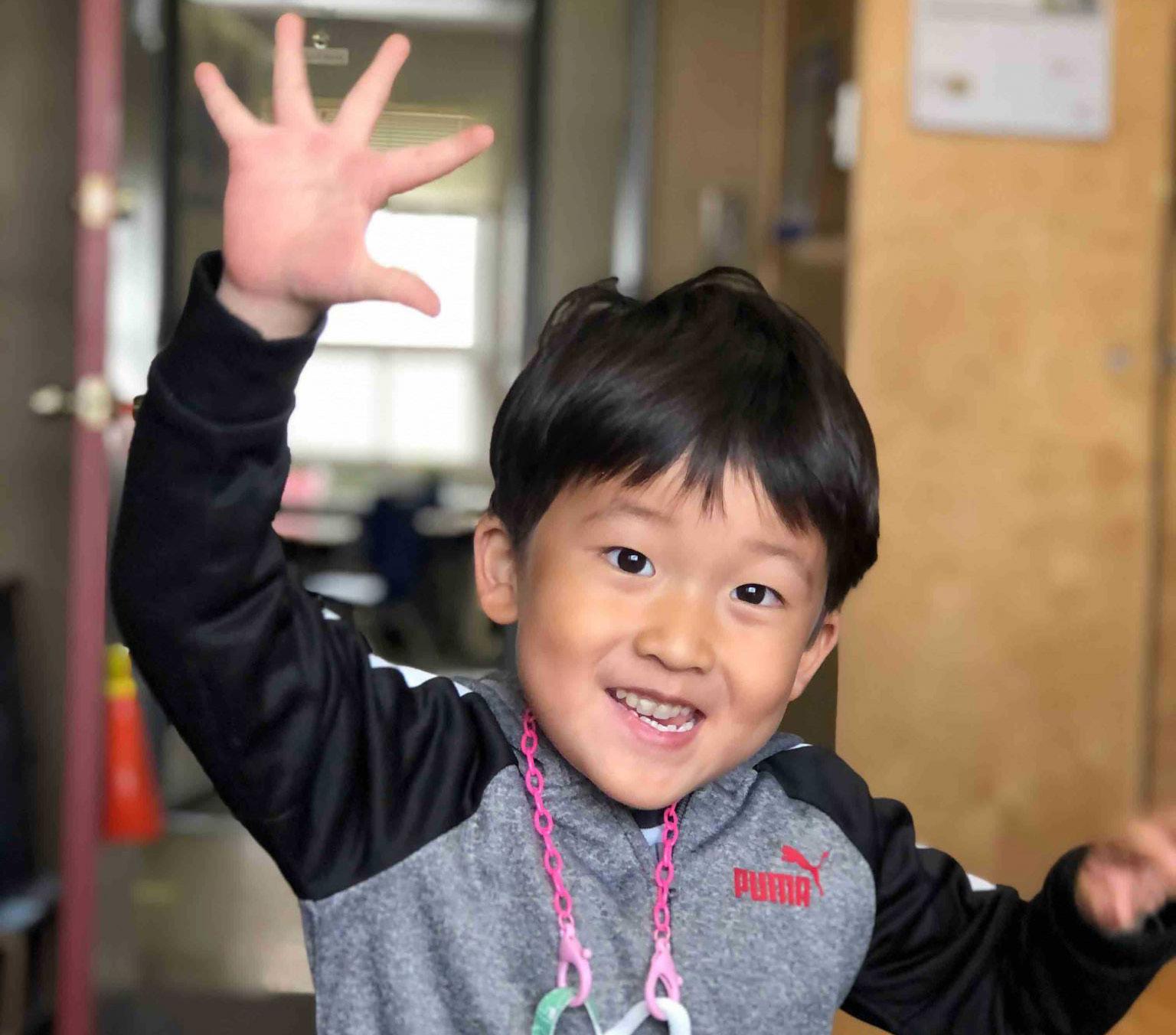

30 // Community Now!
flexibility and insight. Social connectedness would be impossible without the selfregulating behaviour and altruism that arises from our wise decisions. This is actually an enormous topic. The point is that we need to teach children the way we wish them to grow. We need to start small, to model our values and skills. We must engage in both difficult and exhilarating conversations, in order to guide our children with empathy, support, engagement, and the actions that speak a thousand words.
Encouraging our children to “think for them selves” will arise spontaneously when they discover instances when their decisions are not shared by their peers or significant others. Their peers may go down paths that are truly dangerous to their health and wellbeing. They may believe in taking street drugs, shop lift ing, taking vindictive action against their “en emies”, bullying vulnerable peers, stealing cars or bicycles, and so on and so on. Young children and teens need to be able to see that these actions are not prudent. They need to not be swayed like reeds in the wind to follow such actions. At moments like these, parents tend to give advice such as, “If your friend jumped into a fire, would you jump into that fire?” These words have been used for gen erations to indicate the need to think courageously for oneself, to live ac cording to one’s values, and not to be led like a lamb to the slaughter.

So, even when children are very young, it is important to explain your reasons for your decisions to them. They do not need to necessarily un derstand those reasons…but they do need to know that you have reasons.
As children grow, they need to experience decisions as resulting from an evaluation of applicable reasons. Absolutely, they do not need to experience modelling on deci sion-making as taking arbitrary, unreasoned positions, such as the approach that states, “I allow this,” or “I forbid that”. When children grow up with such authoritarian parental or teacher pronouncements, they automatically assume that decision-making is capricious, illogical and haphazard. It can lead to deadly consequences. It can lead to teens saying, “Well, I’ve decided to take street drugs,” not because they have researched the issues and understand what they are risking, but rather because they want to unthinkingly follow a charismatic leader, belong to a desired group, or ignore their inner turmoil. The unfortunate thing is that such abdications of analytical decision-making can destroy their lives. It can also lead to people jumping down rabbit holes of conspiracy theories, being swept up by risky social contagions, and capitulating to mob action.
(continued on next page) (continued from page 29...) Innovation \\ 31
School staff and parents need to provide a nur turing environment for young people to think and act for themselves. We want to enable them to empower themselves regarding as pects of their own lives. This is what it means to be living with an internal locus of control, not an external locus of control. It allows them to realize that there is always something they can do to make their lives better. It also requires them to take responsibility for the ac tions that result from their decisions. Taking responsibility necessarily acknowledges the fact that decisions acted upon always have consequences. They need to learn that acting upon a decision, and dealing with the after math of the resulting consequences, are not just about them. It’s also about how those actions affect everyone else around them. Blame and denial are unacceptable, because decision making inevitably causes individual agency to bump up against the social milieu in which people exist. It is, again, the concept of liberty being the combination of freedom with responsibility. The purpose for training youth to think for themselves is only to assist them to clearly see the reality of their lives, to gain strength to advocate for themselves, and to make amends for their blunders and the pain they cause.
In schools, and in homes, young people need practice with making decisions that are de velopmentally appropriate for their stage in life and congruent with their ability to com prehend the consequences of certain actions. Children should be able to make decisions on recreational activities, the clothing they wear, the music they listen to, the projects they design in collaboration with their teachers, the schedules they devise for their academic work, and the way they handle challenging
situations. At all moments, though, adults are required to intervene with feedback. They may be prompted to offer, “So, how did that decision work out for you? Do you want to make any changes?” Being responsive to the actual results of our choices is just as empow ering as making initial decisions. Our deci sions, in concert with the decisions of those around us, actually create everything about the lives we live. As Daniel Swiatek, my hus band, says, “Decision-making is the engine of education and of life itself. Otherwise, you just drift.” We all have to act upon our deci sions, then evaluate the results, which in turn affects further decisions and actions, on and on. Children can, and need to, participate in this process from an early age—provided that the decisions regard issues appropriate for their age and experience.
Q: What makes your school different?
A: I once asked a student who had been here her whole elementary and secondary life, “What is one thing that is different about Ban bury Crossroads?” Her reply was, “Oh, I don’t know! There’s so much!” I once had a gradu ate student in psychology who undertook to write a paper about how the public system could adopt the values that guide Banbury Crossroads. His conclusion was, “It couldn’t. It would change everything.” The truth is that this school is not a simple, one-issue school, such as a science school, or a sports school. It is fundamentally different, because of its un derlying attitudes towards why schooling is undertaken, what the practical conditions are for optimal learning, where and when learn ing can happen, how classes can be arranged and grouped, and how students can be treat ed emotionally and socially.
Many influences melded into this philosophy that underpins Banbury Crossroads. At the
(continued from page 31...) 32 // Community Now!
beginning, and for 6 years, I read only books on innovative schools around the Western world, and on psychology related to child development and communication. The more I read, and then, the more I listened to, observed, and experienced the children who wove through my life, the more complex the whole topic of schooling became. I discovered a multitude of reasons for having schools at all. I chose values and principles to guide my endeavour over 43 years ago that have remained fundamental today: mutual respect, small classes, empathic communication, emotional and social intelligence, meaningful relationships, an atmosphere of comfort and hope, real-world experiences, self-directed learning, flexible scheduling, vertical age grouping, self-responsibility, collaboration, and altruistic contribution to the community.
It is the combination of these principles that create the same outcomes every year, no matter the teachers, no matter the students: engagement through unfettered curiosity, social connection, self-awareness, emotional safety and trust, self-assurance with problemsolving, academic growth, excellence in written and oral communication skills, a quiet sense of dignity and confidence, and joy. Over the years, many teachers joined me on this honorable endeavour. Together, we experimented, planned, and discerned, how to design the multitudinous practicalities of creating a school that reflects the values and foundational principles I had adopted from the beginning. I am joyful, realizing the uniqueness of this school that exists in the world now.



www.banburycrossroads.com Building B1, #201, 2451 Dieppe Ave SW, Calgary, AB T3E 7K1 For 40 years, Banbury has offered an atmosphere where children feel safe, comfortable, and relaxed. We offer full Pre-K to Grade 12. To learn more, please schedule an appointment with us today or call Anne in the office at (403) 270-7787. (continued on next page) Community \\ 33
Question: How do you define education?
A: The word, “education” comes from two Latin words: ducare, meaning to lead, and e, meaning out. This can mean to lead what is interior to the student, out into the world. Or else, it can mean to lead the student out into the exterior world. The students learn about the world inside them—their talents, aptitudes, creative expression, emotions, in tellectual interests, and skills. They also learn about the world outside them—the physical, cultural, social, political, scientific and artistic realms that make up human collective experi ence. These two processes of education occur everywhere, anyhow, and always. Human beings have an innate drive to master their
environment. They are social beings, and they love to share what they know or believe. Education thus happens inside schools and outside them. It happens every moment of every day. It happens with or without direct instruction. We learn through what works— to keep doing it—and we learn through what does not work—to stop doing it. Learning, therefore, and the lifelong process of educa tion, is like the air we breathe. We exist within the medium, and we cannot exist without it.
Q: Are grades important?
A: What a question! Some people think so, and some do not. Some are relatively un questioning when it comes to accepting the reliability of marks, and others question it very much. Some people think that marks are so important that they allow them to define who they are, including their success in life. Others think that they are limited indicators of overall worth, and look to other measures to determine their success in achieving their lifetime goals.
Within schools, it is a practical reality that at certain times in students’ lives, marks are very important indeed—such as when they are ap plying to universities, technical institutes or colleges. Marks are used as a filter for post-sec ondary institutions, indicating whether or not students possess a basic willingness to be dil igent and persistent in academic studies, and a basic ability and aptitude for that type of work. Potential post-secondary students must prove that they are mentorable.
Then, marks are used at the end of this post-secondary period. We all understand this reality, although we may not often think about why this occurs. One major reason is that it is for the good of the larger society—we need to protect citizens from charlatans and incompetents. We want to ensure that when
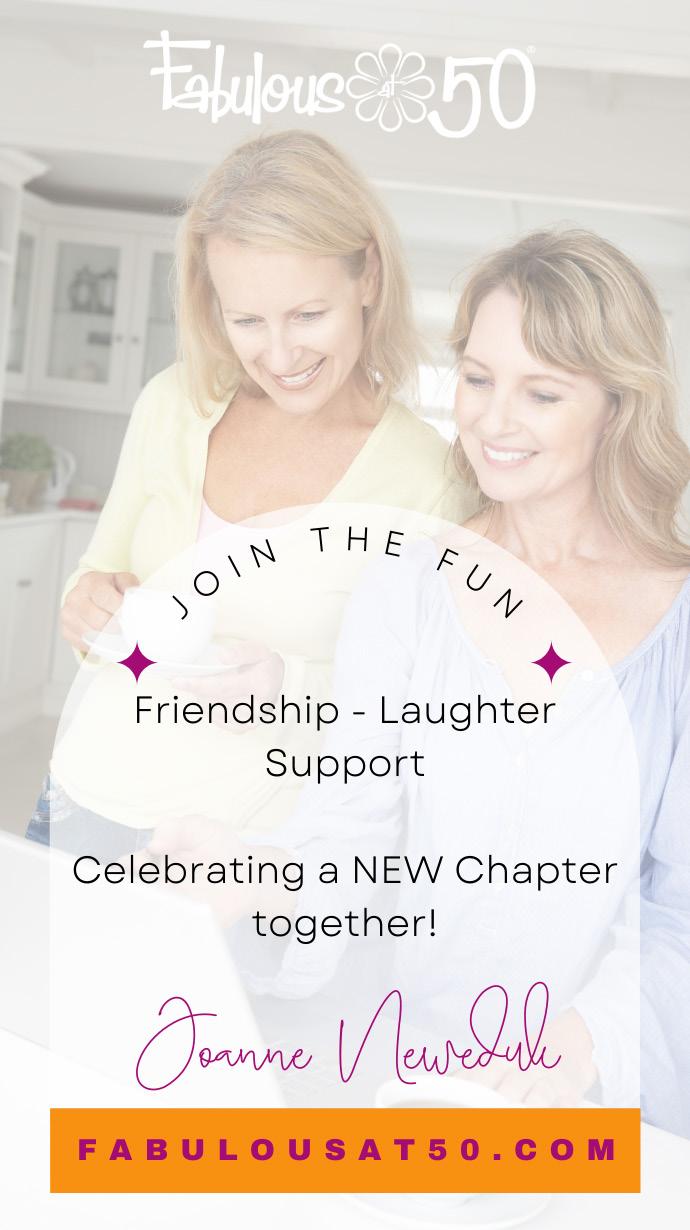
(continued from page 34...) 34 // Community Now!
people claim to have expertise in any import ant field of endeavour, they actually do have that expertise. When generally-acknowledged and trustworthy “experts” give their seal of approval to a novice, people usually feel more confident that they can trust that newcomer to the field. Of course, in the end, after the training is done, novices must prove through their lifelong actions that they are worthy of that trust. Particularly in large urban centers, practitioners in any field must prove their worth, because people are always watching and making judgements—just to protect themselves from strangers they have no close or prior knowledge of.
However, the value of marks during elemen tary and junior high schooling is a matter of opinion. Many people agree, without debate, with assigning comparative marks. They want to be able to differentiate clearly between students’ abilities and accomplish ments, for a variety of reasons. These people have no problem with marks, and they follow through accordingly. At Banbury Cross roads, as students are in the phase leading up to graduation, we teachers see the value of marks as some measure of evidence of demonstrable knowledge and skill. Students understand the need for demonstrating their accomplishments, too—in a variety of ways. However, when it concerns younger students, we have discerned 6 different reasons why marks are of little value on report cards. We have come to see the complexity of this topic. Marks are the last step in examining students’ work. They can only be determined after a thorough assessment of knowledge and skill has been conducted. It is the assessment that illuminates what teachers and parents want to know: how much understanding and ex pertise the students have gained through the learning process. Indeed, the assessment pro cess itself, if it is conducted with the student,
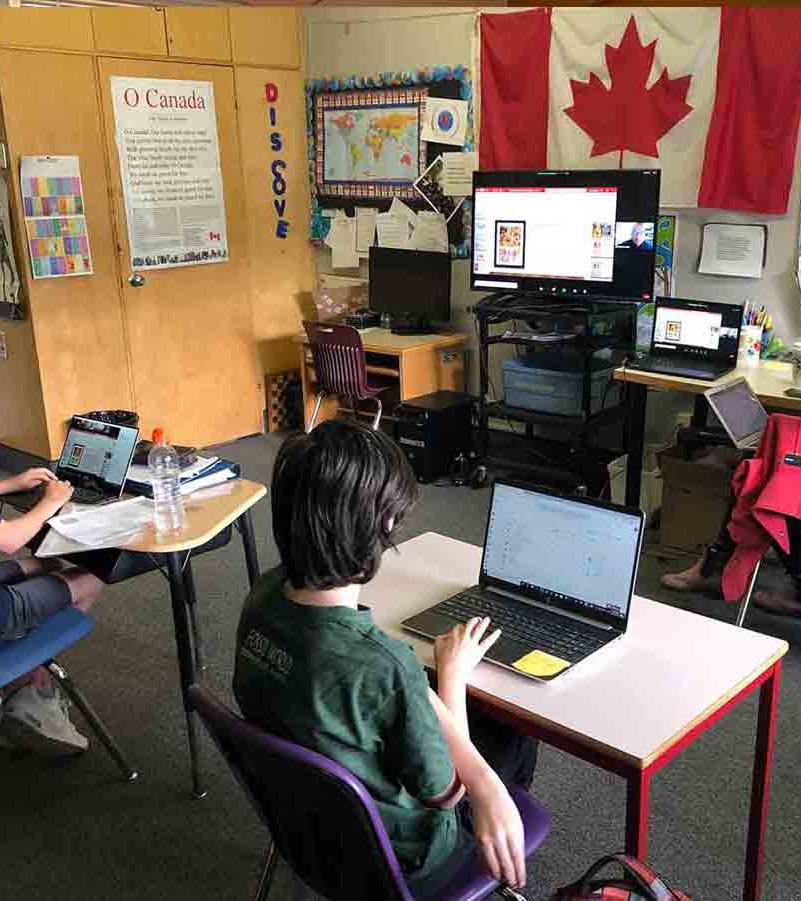
adds to that learning process. Assessment is part of learning, as I alluded to before—we learn from examining our work, particularly when we are primed to care about improving it. Our report cards are long and detailed, with anecdotal observations, specific curric ular accomplishments and checklists, so that these assessments are clear when reporting to parents. Actually, for us, marks alone are insufficient for the purpose of communicat ing with parents. And as for the comparative factor inherent in marks, when it comes to young children, I have seen lists of famous scientists, writers, artists, mathematicians and musicians throughout history who were told when they were around 11 years old that they would never amount to anything—a message which low marks inevitably do convey. I am not interested in being counted in that group of arrogant and erroneous people.
Q: What is the best thing you have learned from students?
A: How to be real.
Community \\ 35
PROVIDING SPACE PROVIDING SPACE

36 // Community Now!
Marilyn Dyck
Ido
not visit social media with any regularity, but I have noticed a feature called 'Watch" and have several times en countered clips of babies and young children videoed doing what they do in response to their adults and to their world. As a Mum and a Nana, I am immediately drawn into the scenes that invite me to watch.
So many adults are paying extra attention to their children and capturing the responses of little ones to various aspects of adult behavior and interaction. The shared laughter and learn ing is precious and inspiring and fun! The gift of children is lived out with laughter and ten derness and affirmation. As adults we cannot resist the power of care and love that fills our being when engaging with little persons.
At every stage of development for a child, it is the role and responsibility of adults to pro vide the necessary space for each one to dis cover who they are by being given the 'space' to think and process.
This space is not just a physical area in their built environment - aka their home. From their day of birth they not only need our phys ical attention in their physical environment, but also the internal space of their hearts and their spirits which will read (without any language qualifiers) the ways we speak, touch, hold, handle … . As they develop, the behavior and attitudes of adults are diligently seen and read by infants and young children. This continues through the rest of their lives in different phases and spaces.
Relationships are the critical context for chil dren to discover themselves, who they are,
what they think, how and what others think and do and appropriate responses to the growing social context of their culture.
Adults must give them the space to navigate physically and emotionally, and to grow the spirit within themselves. Adults hold the responsibility for them, to provide for their safety in all situations and circumstances. Adults model the information about appropri ate responses that are necessary or required in the cultural milieu of the people they live with and encounter in their community.
Learning not only requires experiences in reality, but frequent and necessary time-outs to process what is seen and heard ... and to THINK. Children surrounded by adults who dominate conversations, discourse, activities, encounters, need space to consider what they have observed and experienced. This is criti cally important to their 24/7 learning.
A child is thinking from the start. Their brains are phenomenally flexible and capable. As time passes the complexities introduced in de velopment require space inside themselves to feel and assess and ask questions about their experiences. To feel entirely safe to explore what is happening in their thinking, children need to deeply understand the TRUST they can have with adults. It is the challenge most important for adults to achieve. They must convince the children who watch them that complete transparent honest trust is the basis for their shared relationship.
TRUST is indeed the most vulnerable and fragile of all aspects of our adult personhood
“Providing space for children and young people to think is the most profound gift we can give them.” - Marilyn Dyck
(continued on next page) Community \\ 37
to offer to children. They have wisdom. In their observations of adults they are able to sense legitimate integrity, reliability, consis tency, of the adults in their lives. Children who turn away from an overt adult gesture are not convinced of trust. Children know and they learn that many things adults say are often staged, and do not deliver truth in the long run.
In my years of engagement with young people
I have deeply learned that loss of trust is the most profound way adults hurt and damage children. Loss of trust is not just a repeated one-off. It is a forever broken piece that cannot be fixed by anything but proven integrity over a long period of time.
Providing space for children and young people to think is the most profound gift we can give them. That space is a complete state ment of RESPECT. That space has no control switches. That space holds no judgement. That space offers warmth and unconditional acceptance of the child as a person. It is pri vate and accessed by invitation only.
Our children and young people need THEIR OWN SPACE to process, to question, to orga nize their thoughts, to consider, to wonder, to imagine, to make decisions that fit who they are and what they have learned so far.
If children are surrounded and managed by adults at all times, they stop growing inside and become their best version of accommo dation to adult mandates. They are crippled with a persona that is not really them, just the adult version of their adults imposed on a new canvas which lacks autonomy and identity.
A society which does not offer children opportunities to create and be original and
different and to challenge status quo, becomes a stagnant entity turning in on itself with no newness to enhance itself and grow better.
I recently discovered a quote by a foundation al thinker in education: Jean Piaget
"Education for most people means trying to lead the child to resemble the typical adult of his society. But for me, education means making creators ... You have to make inven tors, innovators, not conformists."
Our children and young people are the future of the world. Providing space for them to grow and learn and question is our highest calling and the essential contribution of our generation of adults. We must nurture the hope and learning and wisdom of what they have seen and heard and processed as they have developed from birth. We must LISTEN to them and LEARN with and from them.
We must recognize and learn how to engage with the PERSONHOOD of children. Current society adults are still largely assumed to represent appropriate power and control. Par enting is endorsed as a power based approach by belief systems, policy statements, social structures and strategies, to raise ‘good’ chil dren. Children, who are raised by adults who believe their role and right is to manage and control children as ‘owned’, are punished for thinking differently and questioning. Children are learning from their world. Learning pro duces new ideas and creates innovation. To a great extent our adult culture is entrenched in reinforcing and repeating status quo.
We cannot risk making our children dupli cates of ourselves. We need to encourage their thinking and their belief in themselves. Their confidence in themselves must be double un derlined by our belief and trust in them. They are as capable as we allow them to be.
(continued from page 37...) 38 // Community Now!
WE NEED TO SUPPORT
TEACHERS
Connie Jakob and Christina Henderson
Seasoned teachers of over 25 years have said “they feel they are starting their careers all over with so many complexities being added to their plate.” Sam Hammond, President of the Canadian Teachers Federation said “Teachers are stretched to their absolute limit. Their mental health and well being are in jeopardy. They need on the ground imme diate supports. It is vital teachers are listened to and listened to right now without delay.”
But at What Cost? a study done by the Canadi an Teachers Federation in 2020-2021 revealed 97% of educators experienced increased physical, mental, and emotional workload and job demands that year. When I showed this statistic to a teacher friend, she respond ed by saying, “This year 2021-2022 was far worse.” There is no doubt that teachers are not doing well and need mental, emotional,
and physical support, sooner rather then later in this new school year.
Evidence based neuroscience tells us that if the teacher isn’t mentally well, there is a ripple affect onto their students and colleagues. If a teacher is struggling and no support is of fered, then the students don’t get the best that teacher has to offer, and the learning environ ment suffers.
Another result is a mentally unhealthy work place leading educators to leave the profes sion earlier then originally planned. This then results in staff shortages, larger class sizes, increased workload and still no support.
Educators, spend time nurturing our young people to grow into the best versions of them selves…we need to make sure educators have the resources, support and environments to do their jobs successfully.
Do you need resources or support ?
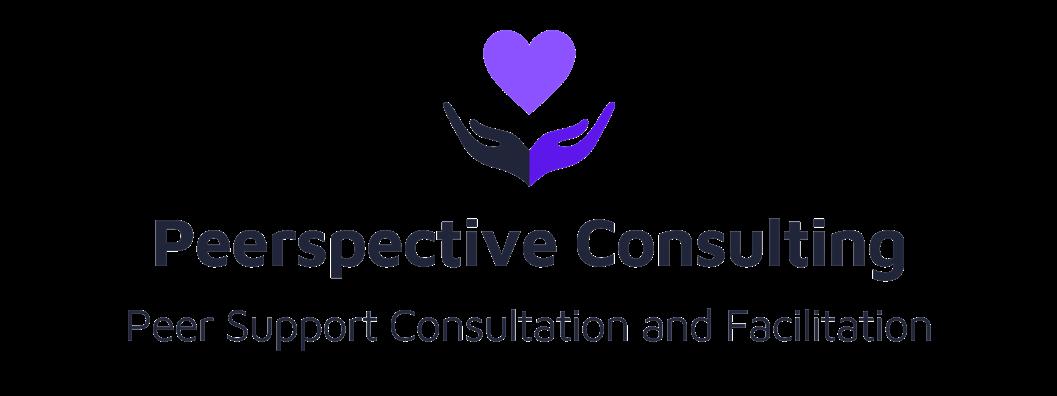
Check out http://certifiedflourishingeducator.com
Mental
Support
Health
and Education for Parents, Youth and Educators Christina Henderson E: peerspectiveconsulting@gmail.com • T: 403-463-5805 Social Media: LinkedIn: www.linkedin.com/in/christina-henderson-7815a322/ Facebook: www.facebook.com/christina.henderson.1088893 Peerspectivesconsulting.ca
OUR
Community \\ 39
Education: Learning From the Community

40 // Community Now!
Branch Out Innovation
Ty McKinney
Haveyou ever experienced frustration with doctors when it comes to brain health? Perhaps the frustration comes from the low long-term success rates of pharmaceutical treatments for mental health conditions like depression. Perhaps the frustration comes from uncertainty about dementia with your parents. Perhaps the frustration comes from unanswered ques tions about using the ketogenic diet to treat your child’s epilepsy. The brain is amazingly complex, which makes us all unique and vi brant people. However, this also means that there a big knowledge gaps in neuroscience and event bigger translation gaps of using that information to improve patient care. If you are looking for more satisfying answers and solutions to brain health, you are not alone. Branch Out Neurological Foundation was created to address this problem based on common experiences across many different
disorders of the brain, from Multiple Sclerosis to ADHD. While the brain may be amazingly complex, the dedication of neuroscientists to improve our understanding of its mysteries is slowly improving the lives of patients. Branch Out’s mission is to accelerate that process.
Since Branch Out is solving a problem, it is like one of the many startup companies in the growing Alberta tech ecosystem. However, instead of selling you software, Branch Out is selling hope (i.e., donations) that funding innovative neuroscience research will accelerate the rate of improvements to patient care. Like any good startup, Branch Out created an innovative new innovative way to solve the problem, which in this case is the NeuroCAM model for funding research. Typically, granting agencies look for the lowest risk projects to fund to increase the likelihood of a “publishable” project in peer-reviewed

(continued on next page) Community \\ 41
scientific journals. In contrast, Branch Out not only looks for publishable projects, but also high-risk and high-impact neuroscience studies that would be less competitive with bigger granting agencies. However, some of the greatest discoveries in medical science (penicillin and antidepressants) were discovered by accident, highlighting the value of these riskier studies. To manage that risk, Branch Out found a niche in funding research that looked at a number of specific modalities of holistic brain health: 1) Nutraceutical 2) Mind and Body modalities 3) Personalized Medicine 4) NeuroCam Tech. By limiting its scope to these 4 modalities of brain health, Branch Out was able to build a community of world-class neuroscientists that all wanted to see improvements in the impact of their research. Importantly, many Branch Out
funded studies involve multiple modalities, highlighting how discoveries in one modality can inform studies on a different modality.
Nutraceutical
When Branch Out was founded back in 2013, there were only small pockets of research on how nutrition could influence brain health. Part of this reason is that is hard to enforce patents on a diet and naturally occurring substances, so this kind of research was not as strongly supported by non-government fund ing sources (e.g., pharmaceutical companies). By including Nutraceuticals as a funding theme, Branch Out actually created demand for this kind of research as some research labs expanded their scope to advantage of this new supply of funding in the local ecosystem. One such lab led by Dr. Jong Rho at the University of Calgary was interested in if the ketogenic diet (high fat, high protein, high fiber, low carb), which had a growing evidence base
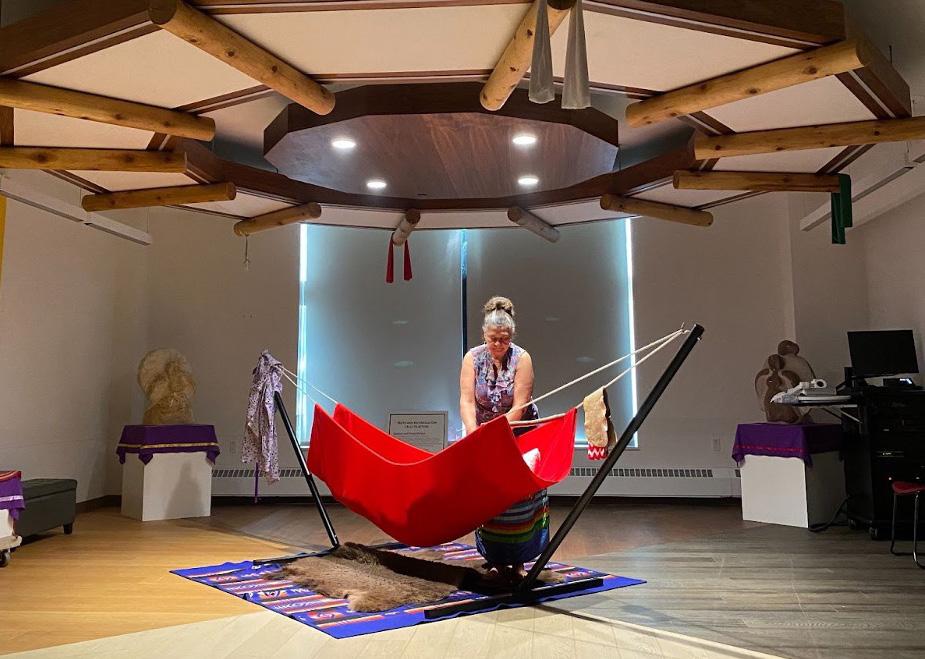
(continued from page 41...) 42 // Community Now!
for treating pediatric epilepsy. Branch Out funded several of Dr. Rho’s students and the next year we received even more applications on the ketogenic diet. Overall, Branch Out has now funded several studies on the ketogenic diet testing its efficacy to treat not only epi lepsy, but also autism spectrum disorder and pain in spinal cord injury patients. Unfortu nately, some of these studies will not produce positive results, but in the entrepreneurial spirit, Branch Out believes it is still import ant to fund the studies anyway if world-class methods are used to conduct the studies.
Mind and Body Modalities
Many different cultures around the world rec ognized the overlap between the health of the mind and body and have developed thera peutic techniques, practices, and ceremonies, such as mindfulness and yoga. While many mind and body modalities are ancient, with some documented histories going back thou sands of years, investigating these modalities through the lens of neuroscience is relatively new. As much as Branch Out looks to exciting technologies to improve brain health, it also sees value in understanding the neuroscien tific principles of how these ancient practices work. In the spirit of Truth and Reconciliation, Branch Out has funded research on wîwîp’son (swing) healing therapy developed by Dr. Darlene Auger, a Nehiyaw (Cree) woman. Wîwîp’son is a traditional parenting practice where one swings and sings to a baby to lull them to sleep in a most loving and nurturing way. Dr. Auger has been using swing sessions with adults that may not have experienced this kind of love and nurturing as infants, and may be experiencing trauma and chronic stress. Dr. Auger is working with Dr. Kelvin Jones at the University of Alberta, who thinks there might be something special about the
(continued on next page)

Community \\ 43
frequency of the swinging that could activate particular brain networks. The research used wearable brainwave recording technology to get a glimpse of what is happening inside the brain as well as the heart and breathing during the healing swing session. Together, they are using cutting-edge science to validate the ancient wisdom of the Indigenous peo ples of Alberta as a culturally informed and evidence-based way to promote the recovery from trauma.
Personalized Medicine
We are all unique and vibrant individuals, until we enter a research study. Then the conventional approach is to treat everyone the same, creating a one-size-fits all mentality within clinical science and medical practice. Not every treatment will work for every person and Branch Out believes it is critical to under stand why these differences exist to offer the next level of care for brain health. For example, when someone experiences a concussion, there is a risk of developing the much longer-lasting post-concussive syndrome, yet there are not currently ways to understand who carries that risk and who doesn’t. To answer that question, Branch Out funded research conducted by Julie Joyce to adapt research on balance-based symptoms experienced by some concussion patients into new assessment approaches that could flag patients as having higher risk for post-concussive syndrome. However, once a patient has been flagged, what now? Julie has also conducted research on how to personalize exercise-based rehabilitation to accelerate the recovery of concussion patients. Her research uses the patient’s own data to customize ex ercise protocols to maximize the brain health benefits while minimizing the risk of exag gerating the brain injury through excessive exercise.
NeuroCAM Tech
The most exciting discoveries in neurosci ence will not matter much if they don’t make the leap from the research lab to the lives of neurological patients. This is where the de velopment of digital health and neuroscience technology to bridge this gap is so critical, as it helps commercialize laboratory-based research into evidence-based and accessible treatment options. Branch Out funds research all along the commercialization spectrum, from the foundational science studies needed to develop technology to randomized control trials, to commercialization efforts. For exam ple, consider the relatively new Brain-Com puter Interface (BCI) technology, which in 2018 had people excited about the possibility of letting people type and move mice through their brainwaves. However, Dr. Adam Kirton at the University of Calgary recognized some barriers to implementing BCI technology with kids that have Cerebral Palsy and other mo bility disorders. Branch Out funded his lab to conduct some foundational science research on how to address these barriers, which has led Dr. Kirton to found BCI4Kids and share this technology with the world. Keep your eyes posted for BCI4Kids at events like Bea kerhead, where you can learn about all about this technology and the opportunity it holds to empower children with mobility issues.
If you enjoyed learning about the research that Branch Out has funded across the 4 modalities of NeuroCAM, you can satisfy your curiosity through more blogs and science stories on our website. Follow us on social media to get more holistic neuroscience news on your feeds and learn about our upcoming fundraiser events, like the Bike Tour at Panorama, B.C. and Your Brain on Art. We are excited to have you as part of the community that supports brains at their best.
(continued from page 43...) 44 // Community Now!

LISTEN • REFLECT • ENGAGE Every Child Matters For all the children who didn’t make it home and for those who did. For more information, visit www.canada.ca/en/canadian-heritage/campaigns/ national-day-truth-reconciliation.html September 30th National Day for Truth and Reconciliation Community \\ 45

“Let us never negotiate out of fear. But let us never fear to negotiate.” JFK
46 // Community Now!
The Superpower Project Navigating the Negotiation
Blaise Hunter | Human Rights Consultant | Heroine
Weare a culture that depends on negotiating. Whether we are conscious of it or not, our minds, bodies, and habits negotiate thousands of deals daily. Yet, when we are faced with confronting the compromise, many of us fill up with fear. I was one of these people. I had negative self-esteem for most of my life, so taking a hard stance on what I want or what I am worth has been particularly challenging for me. Over the years I have healed that part of me, but I still notice I get timid and nervous when I’m faced with presenting a counterof fer. I admire my husband and his ability to detach his identity from the process. He is a fantastic negotiator. When I examine how my husband and I approach this issue differently, I can’t help but wonder if being a woman has anything to do with it.
The Superpower Project is about highlighting various challenges or “kryptonites” facing people and helping us neutralize their effect on us. A deadly kyrptonite facing us these days is women are great at negotiating for others but not so much for themselves. There are empowered negotiators with all genders, but women face distinct challenges when it comes to this transaction. Mostly because we are often referred to as aggressive, disagree able, or unladylike when we do it. Women are also more inclined to have imposter syndrome and undervalue their professional worth. We have been conditioned to avoid assertiveness, an essential skill for an effective negotiation. As I have unearthed my super identity, I
have made a clear intention to get better at the art of negotiating. The only way to do this is through practice. So even in the last few weeks, I have pushed through my fears and tried to bargain better.
This has been a fascinating exercise for me. The flood of emotions fills my head with what ifs, and various scenarios of responses. I clear ly recognize this is a skill I need way more conditioning but my willingness to learn, try, fall, and repeat again is prevalent. The first attempt I got exactly what I countered and the second one I got four out of the five things I wanted. So far, this experiment has been a success. The thing about negotiations is, you aren’t always going to get everything you ask for. That isn’t the point. It’s about finding a common ground where everyone walks away feeling empowered and a winner. Repetition helps disarm some of those anxieties and the fears of broaching uncomfortable conver sations. This is where the practice becomes a superpower. The more we negotiate, the more confident we become. We learn even if we don’t get exactly what we wanted, we were brave with our bargaining. The win is in the attempt. We take steps to owning our identity, when we voice our needs, personal and professional worth, and our wants. This is a loud signal that the other side is dealing with someone who values themselves. I want to challenge people to be a courageous com municator with their worth and what they deserve. We cannot change the outcome if
(continued on next page) Community \\ 47
we don’t even try. Women can use their skills of poise, assertiveness, fluidness, empathy, intuition, collaboration, diplomacy, resource fulness, and resilience to reach a successful transaction. Don’t deny the feminine to fit in the masculine exchange. Leverage these attri butes.
Here are some key tips to help when negotiating:
1. Transform the Money Mindset -
This is all about knowing our value. When we truly know our worth and express this, others will perceive it as well.
2. Go High – Men ask for more than women do. Ask for higher than your ideal outcome.
3. Practice – Get rid of anxiety through the discipline of repetition. Nego tiate even the small things in life to remove the awkwardness.

4. Prepare – Knowledge is empower ment. Arm yourself with tools of information. Research and have sup porting facts to back the ask.
We need more voices that encourage women to take risks and declare their worth. We should be teaching this in schools, homes, churches, workplaces, and organizations. A confident and savvy woman negotiator empowers our world. Women and positive emotions belong at the table. We can drive mutual solutions and constructive outcomes for all parties. This isn’t about one-upping or overpowering anyone, negotiating is about walking away with mutual victors. We must shift the focus from one winner to winning together. Since women do better at championing others instead of themselves, we can use this to our advantage. Let’s try negotiating communally. Approaching negotiation as though we are petitioning on behalf of others or the betterment as a whole, we will be seen as collaborative and self-assured. This creates an impression of leadership and demonstrates that women who adopt a “shared” or “I-we” strategy, in which they show concern for the other per son’s perspective and position can reduce the social cost of negotiation. We can only do this if we are willing to take a step past our fears. We can only create safety in the negotiation if we are bold, brave, and un bound. Let us rise and unshackle our voices for the common good of humanity. Dare to ask. For more information about the Hero ine Movement visit www.blaisehunter.com
(continued from page 47...) 48 // Community Now!
Welcome to HOPES; Corner!
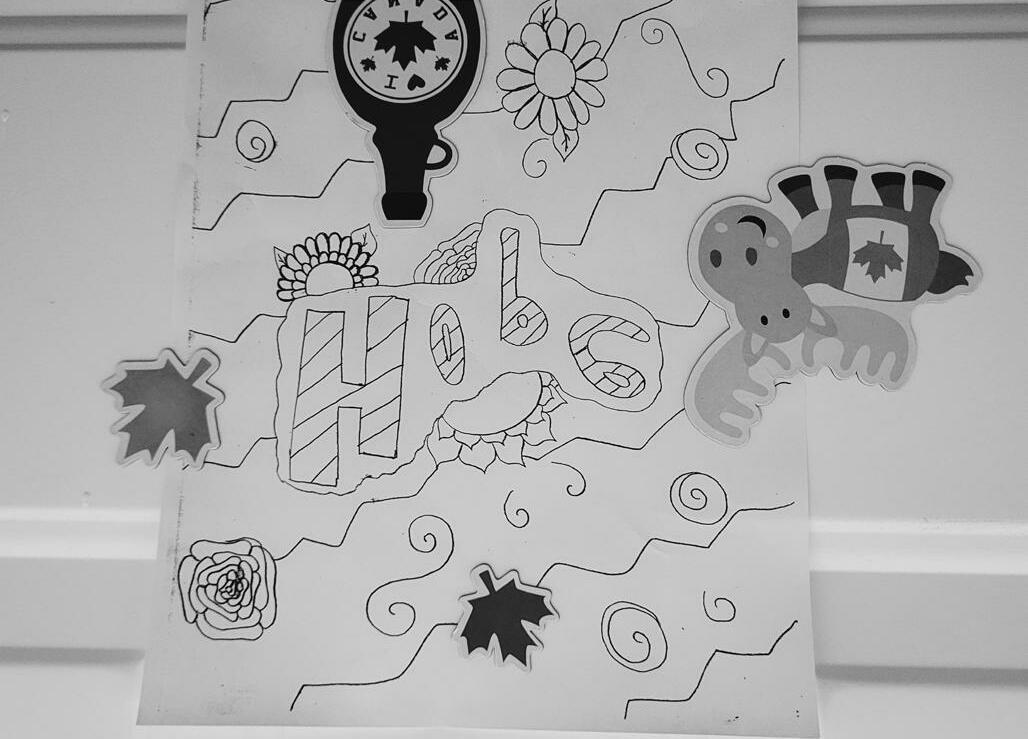



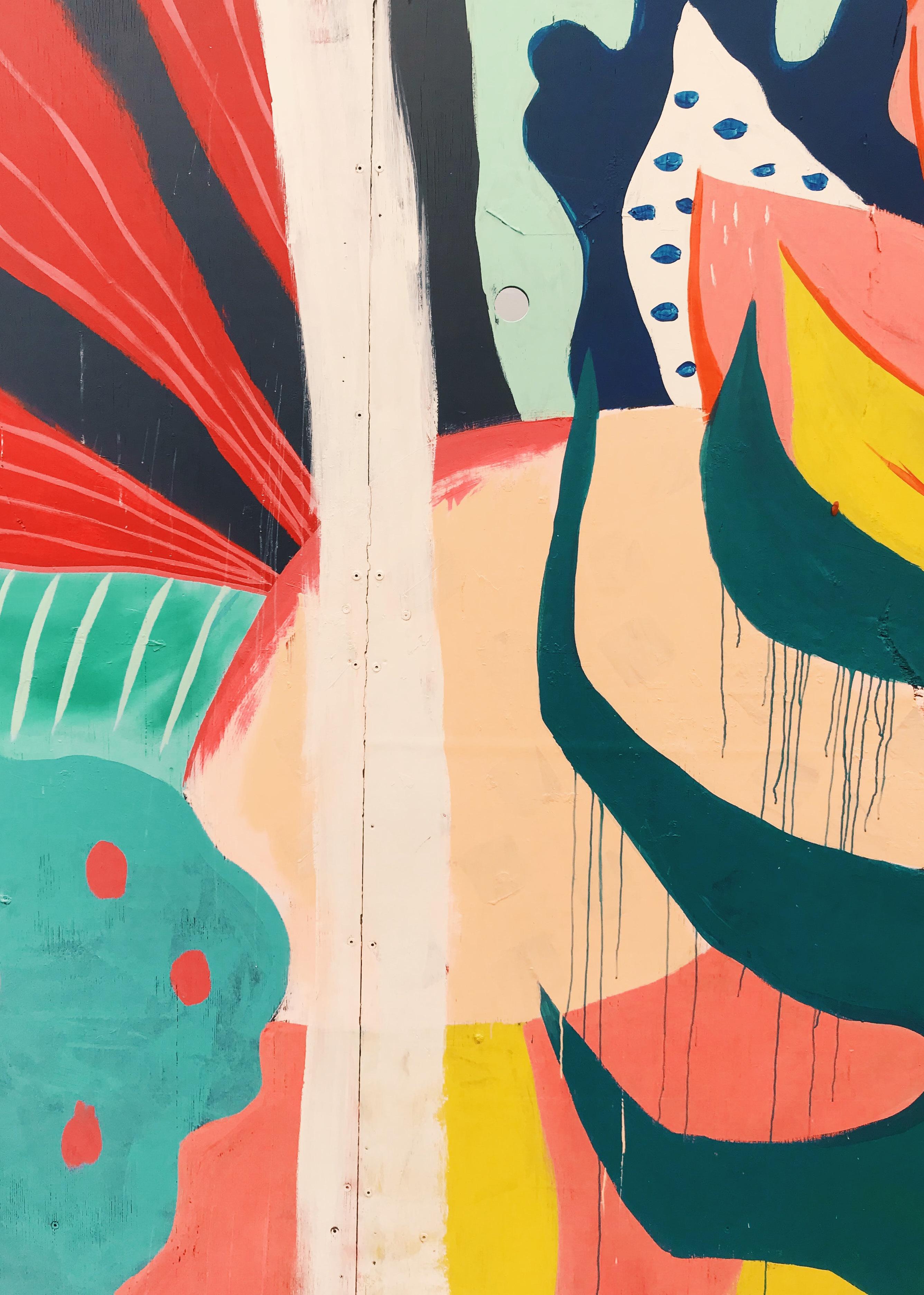
Educate others by rebuilding HOPE! H; Health O; Of P; Philosophy E; Essential KIMBERLY DAWN Essential Care Partner & Peer Support Specialist As a BRIDGE Builder of Hope; Courage; Strength & Joy! Stronger Together within YYC, Alberta, Canada! H; Honour O; Opportunity P; Pride E; Evolve Let’s connect about how we can build HOPE together. Reach out to us at: outreach@intonovus.ca We will have ‘Enough HOPE For All!’ Leaving no one behind; not even the ones without keys or a home to call their own! H, Home O; Onwards P, Perseverance E; Enough Check out this opportunity on September 21, 2022 Building Engagement Capable Environments Engagement capable environments are environments that have incorporated the values of patientcentered and patient-partnered care as a philosophy underlying the organization’s priorities. www.healthcareexcellence.ca/en/what-we-do/all-programs/essential-together/ essential-together-huddles-connecting-for-peer-to-peer-learning-and-support ~~~~ ; ~~~~
Motivation!! Who am I now?!
Sharyl Madigan
Life has changed and so have we. Our wants and desires have changed and now we are looking at ourselves and wondering who we have become and what really makes us happy.
As Simon Sinek says “Start with your Why” can’t be truer than it is today. However, most of us have no idea how to do that or discover what our why is.
What really makes me get out of bed
morning, energized and ready to go?
What makes me want to stay in bed and not face the world?
Why do I enjoy doing this and my spouse/friend/co-worker enjoys doing something else?
What do I envision myself doing in the next 5, 10, 15 years?
What really does get me excited enough to want to do it?

What makes me feel like I am a part of something, contributing to something, making a difference?
Can I really be the true me and not worry about what others think?
So, let’s ask ourselves some questions: • •
each
• •
• •
• •
• •
• •
• •
50 // Community Now!
Simple questions. Hard answers. Most of us really don’t know the answers or how to get to them.
A solution to finding answers to the questions:
Understanding Your Motivation!
But what is motivation?
Motivation is what drives people to success. True motivation is an inside job. We all are motivated and the more driven we are, the greater the success we achieve.
Motivation plays a critical role in our lives, personally and professionally. It is the inter nal reason which prompts us to act in certain ways. We all need motivation as it generates our energy. The more motivated we are the more energy we have. It is so easy to see the people who are motivated. They buzz! They are bursting with energy, stress seems to touch them less, their problems seem to be more manageable, the higher their self-es teem. We all want to live there!
Most people have the belief that motivation is external/extrinsic and not internal/intrinsic. And there are external motivators. Most of which are basic needs motivators. I need to keep my job to feed my family, pay for our home, keep everyone clothed. When those extrinsic motivators are engaged, they are temporary and do not produce a positive re sponse. They do not create long term happi ness or success.
Motivation is invariably correlated with the quality of our lives – with our energy levels, with our achievements, with our sense of sat isfaction.
When we look internally for our motivation, it becomes something that drives us. We strive
to satisfy that drive not the fear. We all know that we need to exercise, but how many of us do? And what exercise do you engage in? And why? Do you go to the gym to connect with others? Do you go to the gym because it is convenient? Do you walk because it can be done at any time, anywhere, alone or with someone? But what gets you started? And what keeps you going? Motivation
Now let’s talk about our professional lives. Leaders today have a greater challenge than ever. We have learned that over 70% of people quit their managers/leaders and not their jobs. We have also learned that the average number of productive hours of work in the office is 3 hours (American Labour Statistics). However, most managers/leaders believe that if you are in the office, you are working a full 8 hours. Showing up to the job does not mean that you are productive, engaged and performing at optimum levels.
Our role as leaders today is to provide the right environment for productivity and en gagement. This requires getting to know and understand our people and what motivates them. Our motivation is very closely aligned with our values. Our motivators are deep needs within us and when these are being met, we become inspired and engaged to per form at our peak.
We want successful, creative, and motivated organizations that are adding value to their communities and to the world that effectively experience longevity. And now we have the Great Resignation and even more recent, the Quiet Resignation. So how do we ensure business success by hiring the right people and retaining them.
(continued on next page) Community \\ 51
The consequences for organizations of not paying attention to people’s motivation are severe and ultimately terminal.
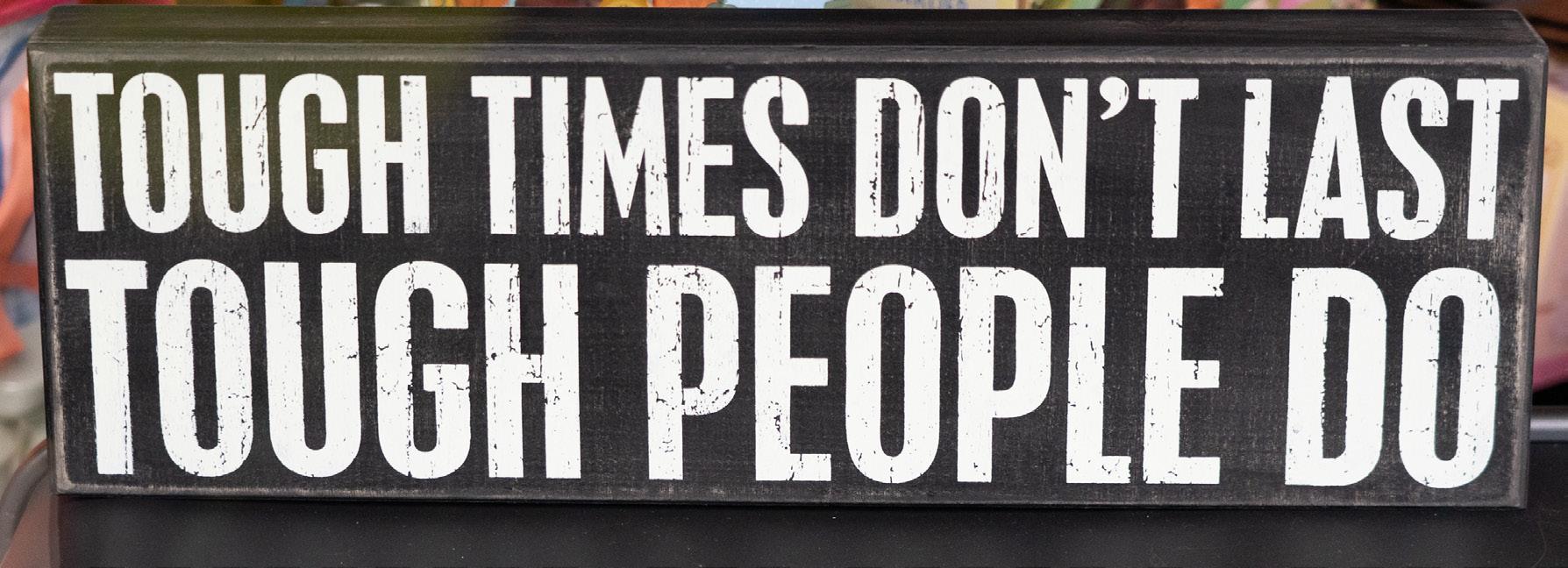
We need new leadership, a leadership that embraces ambiguity and focuses on people and motivation. It is the people that perform the work, and they need to be motivated to produce the results the organization is look ing for.
In Stephen M. Covey’s new book Trust and In spire, he states that until the leadership shifts from the old Command and Control mindset to the new Trust and Inspire, businesses will have a difficult time recruiting and retaining the right people. And before trust and inspire can take place, you must have a motivated workforce. He also states that managers do not manage people, they manage things. Leaders lead people and to do that they need to know how to motivate them. They need to get to know their people and develop an un derstanding of them.
So how do you determine all this? How do you know what motivates an individual and why? How satisfied is that individual in their position in the organization?
The most successful leaders today are the most self-aware individuals in business. They have taken the time to understand themselves
and what motivates them and then taken that knowledge and transferred into leadership qualities to take their businesses to the next level. They engage their people in the plan ning and decision-making process. They gen uinely care what their people think and feel about the direction of the organization as well as their place in it. They ask questions to get to know their people and their strengths and motivations. They listen to them. And not superficially.
They know their own motivations and under stand that you need to meet the needs of the individual to ensure everyone is working at their optimum with enthusiasm and passion.
Understanding that motivation is not a per sonality trait that is hard wired. It is contex tual. Motivation is dynamic and changes over time and life experience.
Being able to identify what your motivational drivers are and the level of satisfaction you are experiencing is invaluable to each of us. Knowing our motivational drivers helps us understand ourselves on a deeper level and moves us forward to creating a better, happi er, healthier, more productive life.
Motivation is a core aspect of all people devel opment. Motivation drives Success
Motivating for Success
(continued from page 51...) 52 // Community Now!
LET’S CHANGE THE NARRATIVE






Community \\ 53





www.communitynowmagazine.com Facebook: @communitynowmagazine Twitter: @communitynowma1 Publisher@CommunityNowMagazine.com Our Mission: Promoting curiosity, communication and engagement in making Alberta a stronger and better place to live, to be educated, do business, promote innovation and community celebration.












 Margo Purcell
Margo Purcell



















 Steve Armstrong
Steve Armstrong


































































